- Incredible fuel efficient and punchy drivetrain
- Roomy and well-appointed interior
- XSE variant is the sweet spot of the RAV4 range and offers tons of value
- Infotainment still lags the best in class
- Interior not as plush as it could be
- You'll have to wait 12 months for a new one
The 2022 Toyota RAV4 XSE is hot property in Australia. With wait times often exceeding 12 months for the hybrid model at time of writing, this is probably the most sought after new car on the local market. Not a Ferrari or a Porsche. A humble Toyota SUV. The RAV4’s popularity is well founded as it manages to tick so many of the boxes we expect from a family SUV and the hybrid variants promise to slash fuel bills by at least half in times where fuel prices often exceed $2.50 a litre.
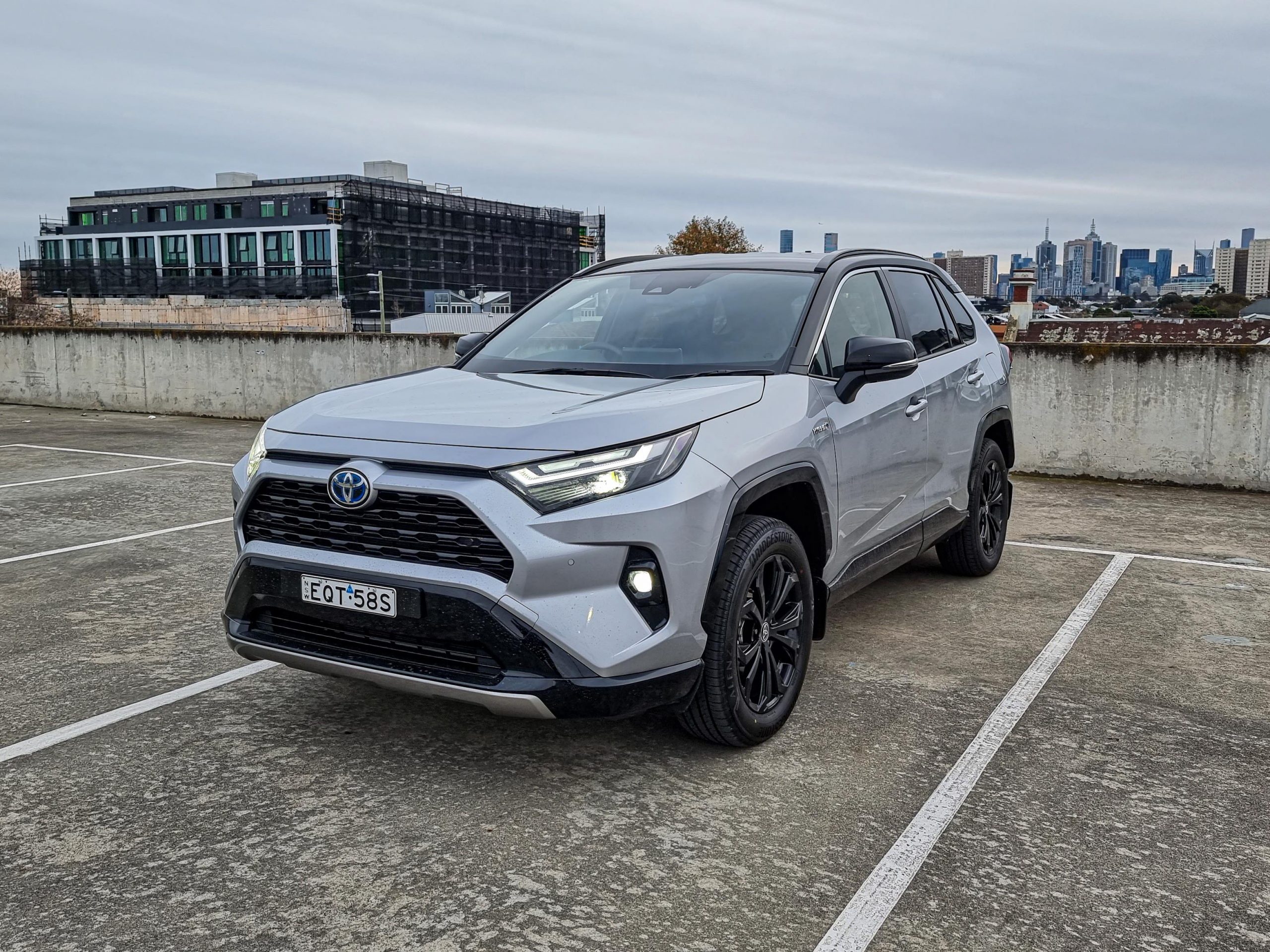
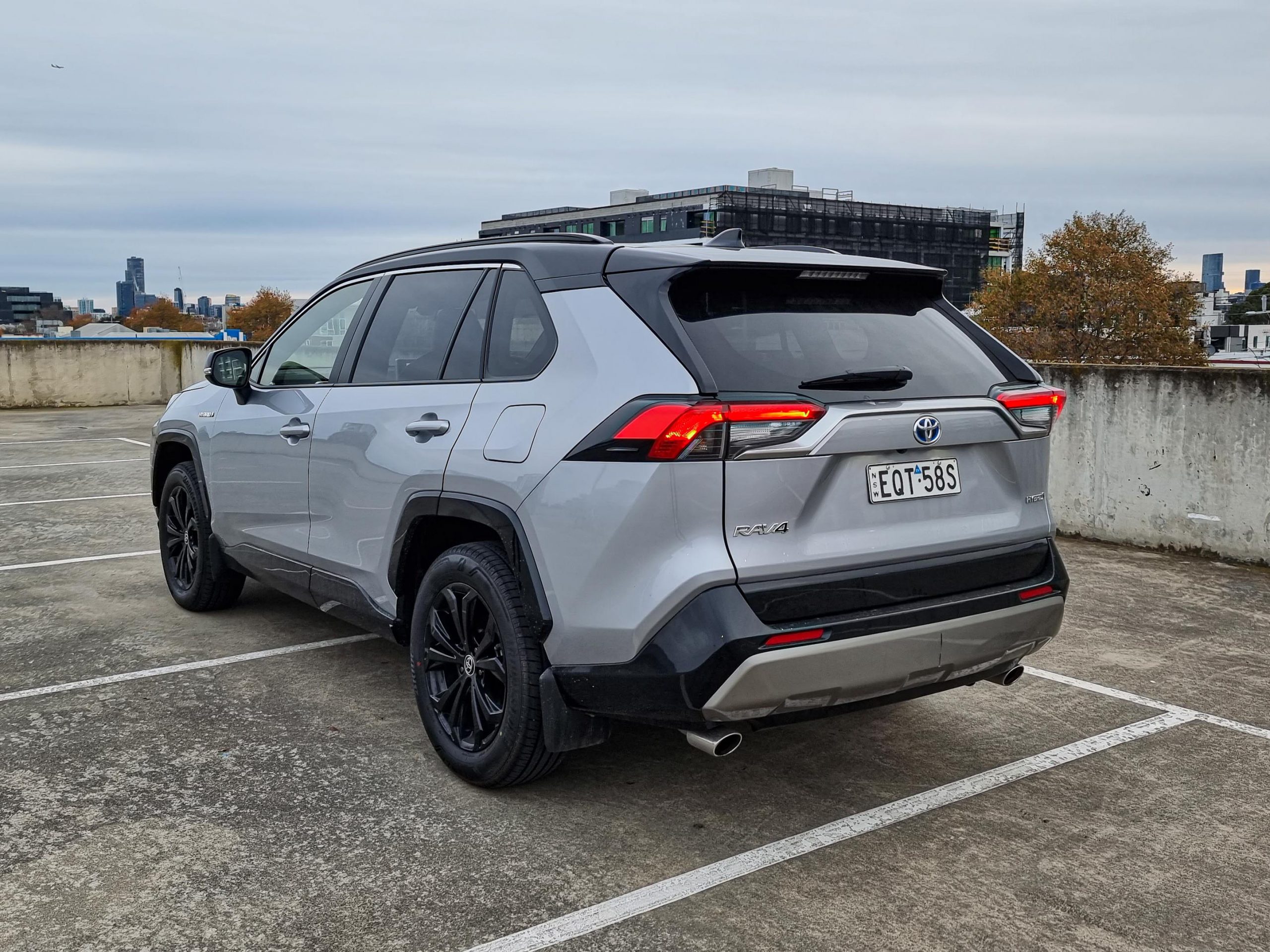
For the 2022 model year, the Toyota RAV4 received a fresh look with sleeker headlights, along with the introduction of a new mid-range model – the XSE. Slotting in between existing the RAV4 GXL and the RAV4 Cruiser specifications and coming only with Toyota’s famed hybrid drivetrain, the XSE promises to be the value pick of the range and what we think might be the RAV4 model to buy.
So, should you join the waitlist for a RAV4, or should you opt for one of the Toyota’s rivals such as the Hyundai Tucson or Mazda CX-5, both of which aren’t burdened with supply issues and are cracking cars themselves. Let’s find out.
Price & Equipment: 8.5/10
This 2022 Toyota RAV4 XSE Hybrid is a new model for the 2022 model year and is priced from $43,250 before on-road costs. Using a Victorian postcode, a new one will set you back $47,928 drive away. As we said, due to stock shortages, expect to wait 12 months – and incur a price rise – before delivery.
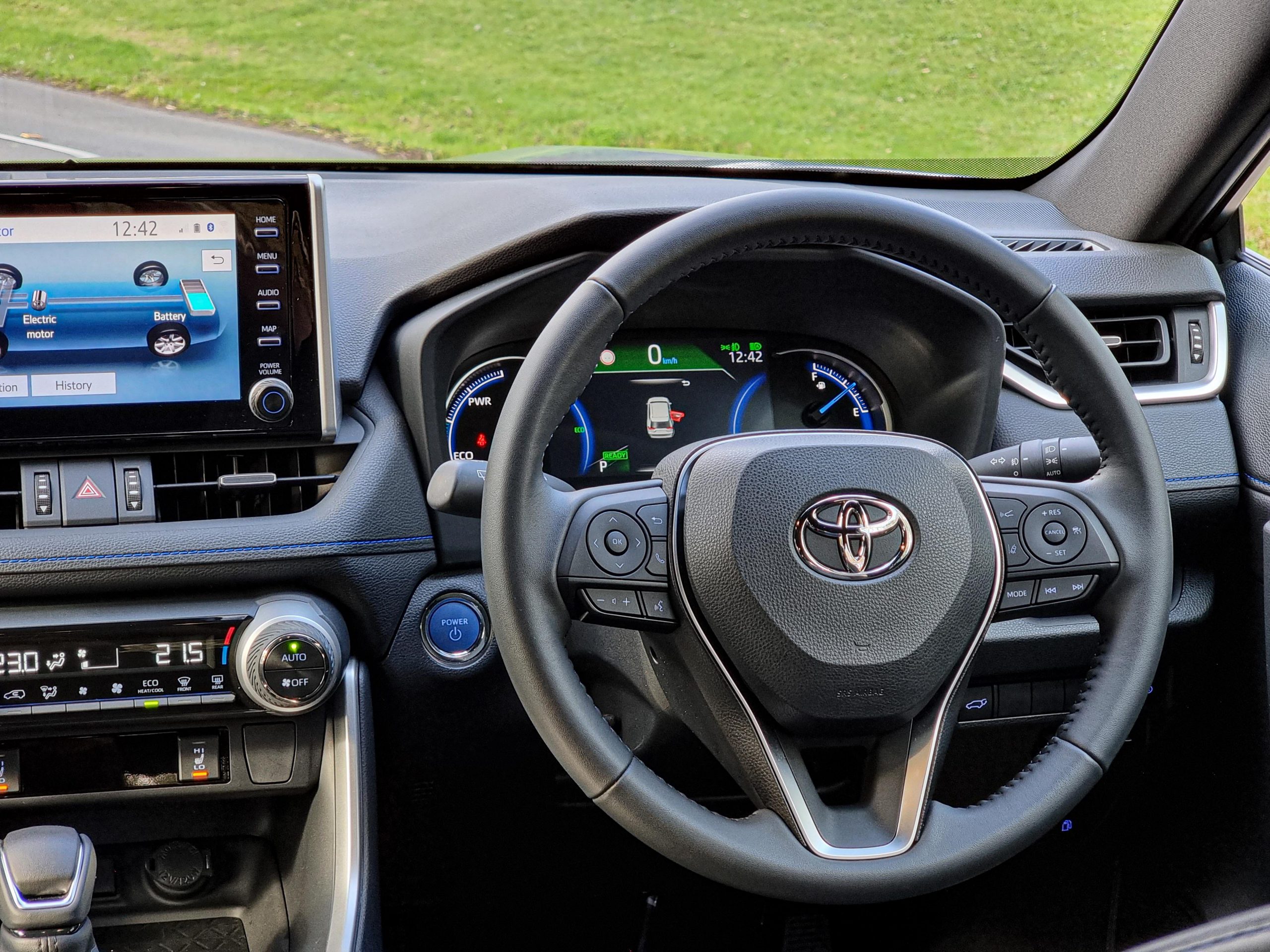
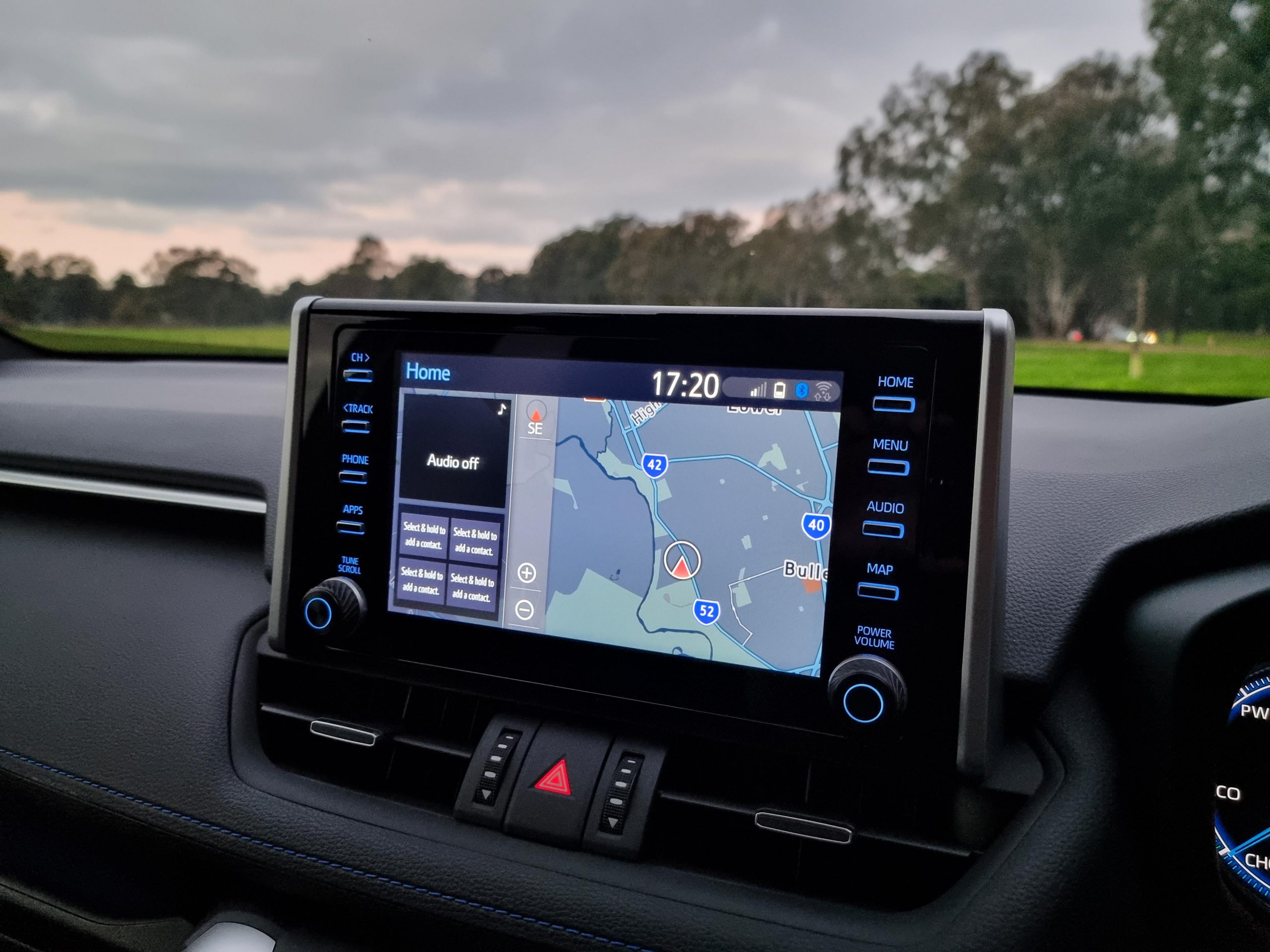
Sitting in the middle of the 2022 Toyota RAV4 range, the XSE is quite well equipped. Standard kit includes LED lighting, auto lights and wipers, 18-inch black wheels, a black exterior accent pack, a dark headlining, leatherette upholstery with blue stitching, heated front seats, a 10-way power adjustable driver’s seat, a 7.0-inch driver’s display, five USB ports, wireless charging, keyless entry and start, heated and electric-folding mirrors, an auto-dimming rear mirror and an electric tailgate. Infotainment is handled by an 8.0-inch touchscreen that has wired Apple CarPlay, Android Auto, digital radio and satellite navigation with a six-speaker sound system.
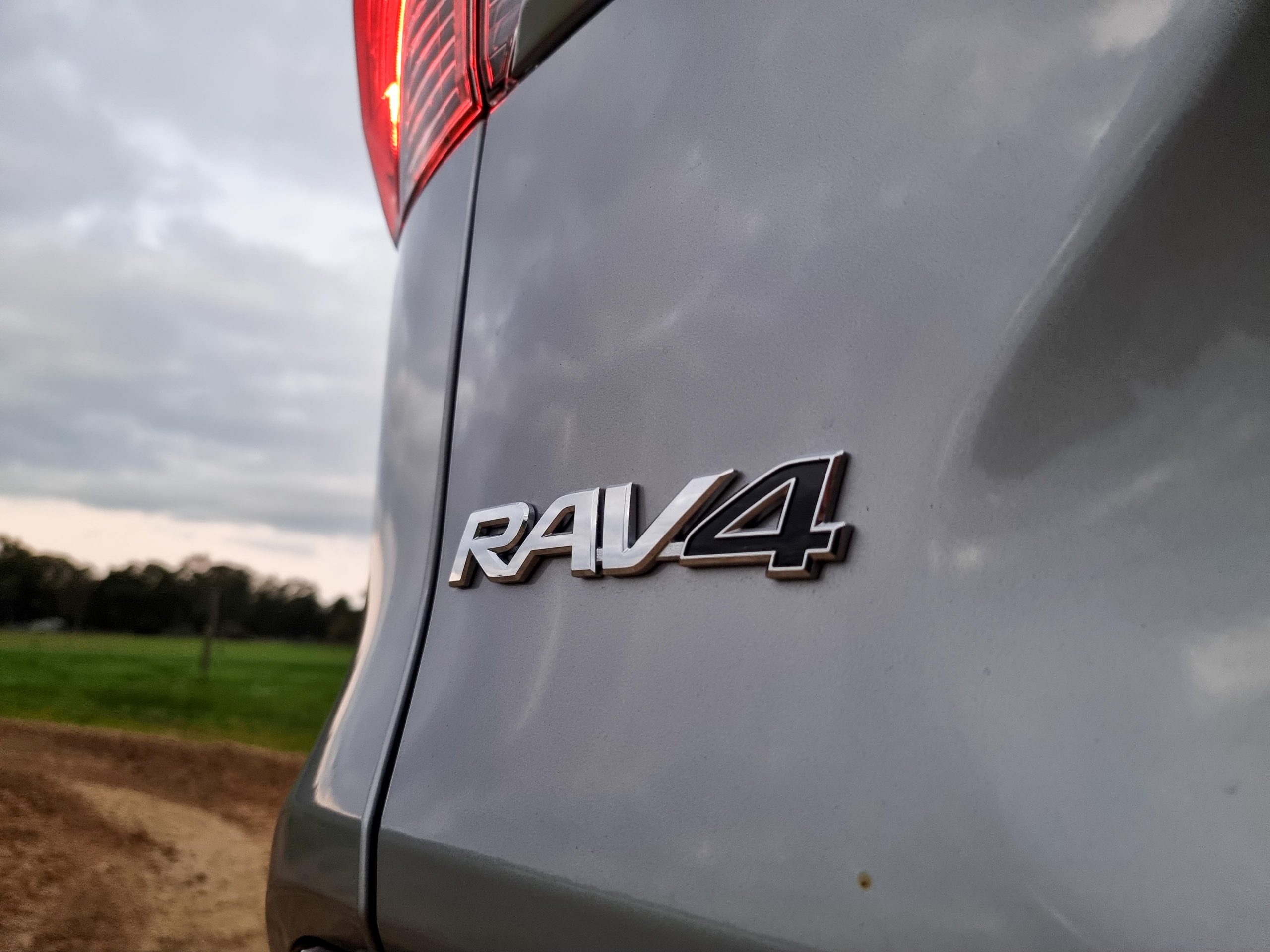
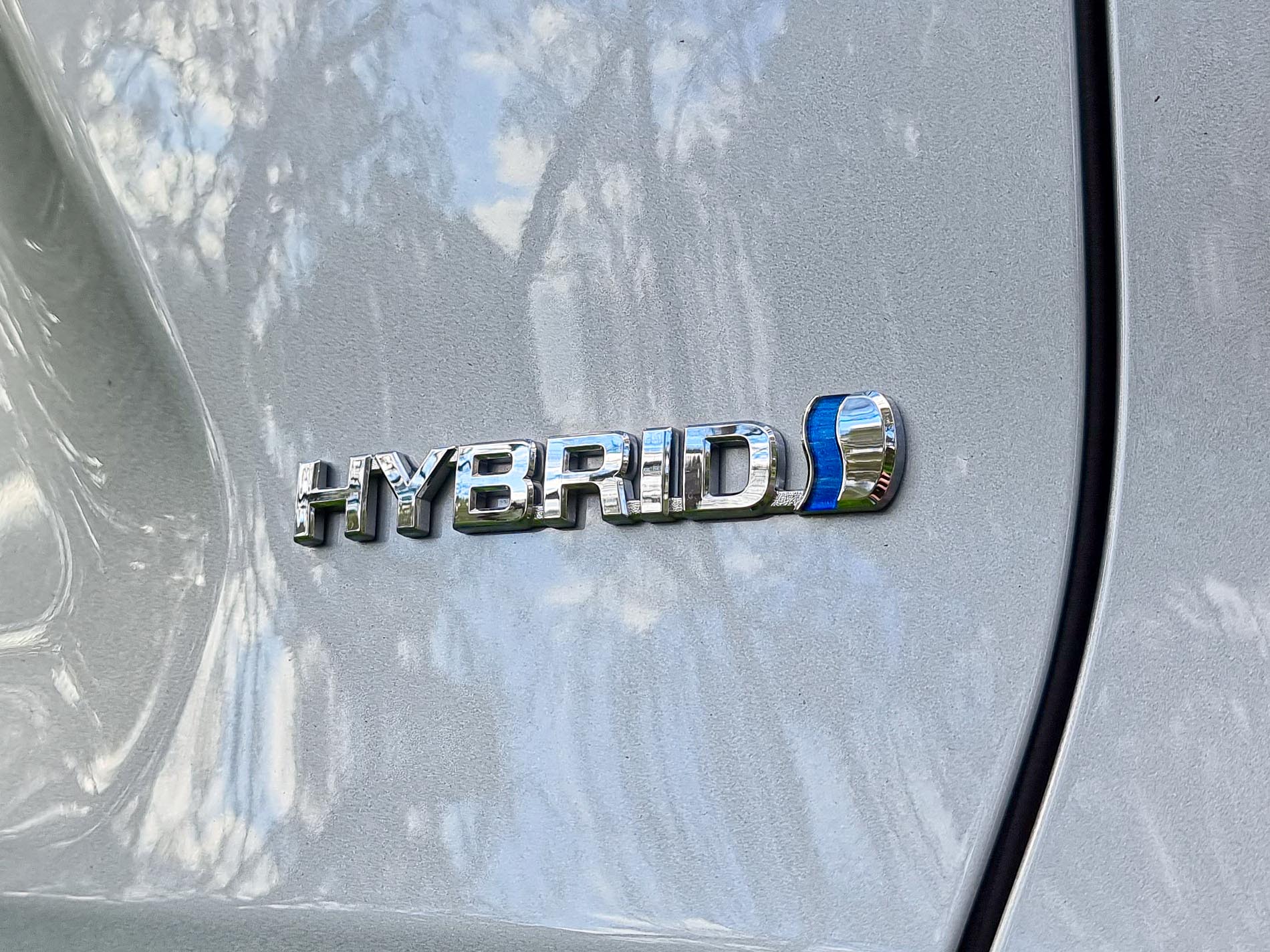
The RAV4 XSE’s safety package includes seven airbags, a 360-degree parking camera, front and rear parking sensors, auto high beam, auto emergency braking (AEB) with both pedestrian and cyclist detection, speed sign recognition, driver attention monitoring, adaptive cruise control featuring stop and go functionality, lane departure warning with lane trace assist, and blind-spot monitoring with rear cross-traffic alert. The RAV4 comes with a five-star ANCAP safety rating.
This is a decent equipment list, but there are a few things we think are missing. At this price point a heads-up display, a fully digital driver’s display and active braking for the rear cross-traffic alert should all be standard. An updated infotainment system with digital dials is set to arrive on the RAV4 in the coming months.
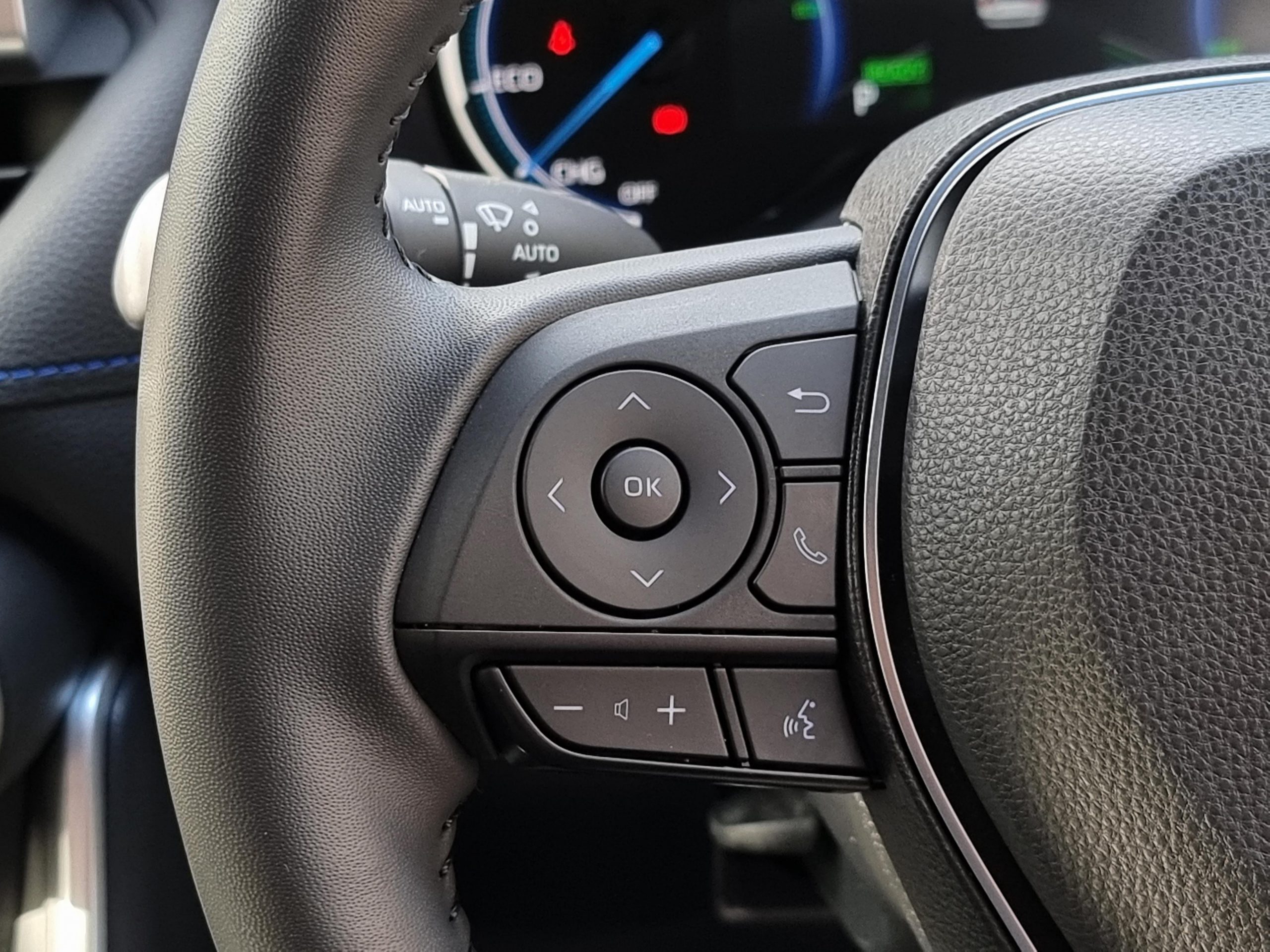
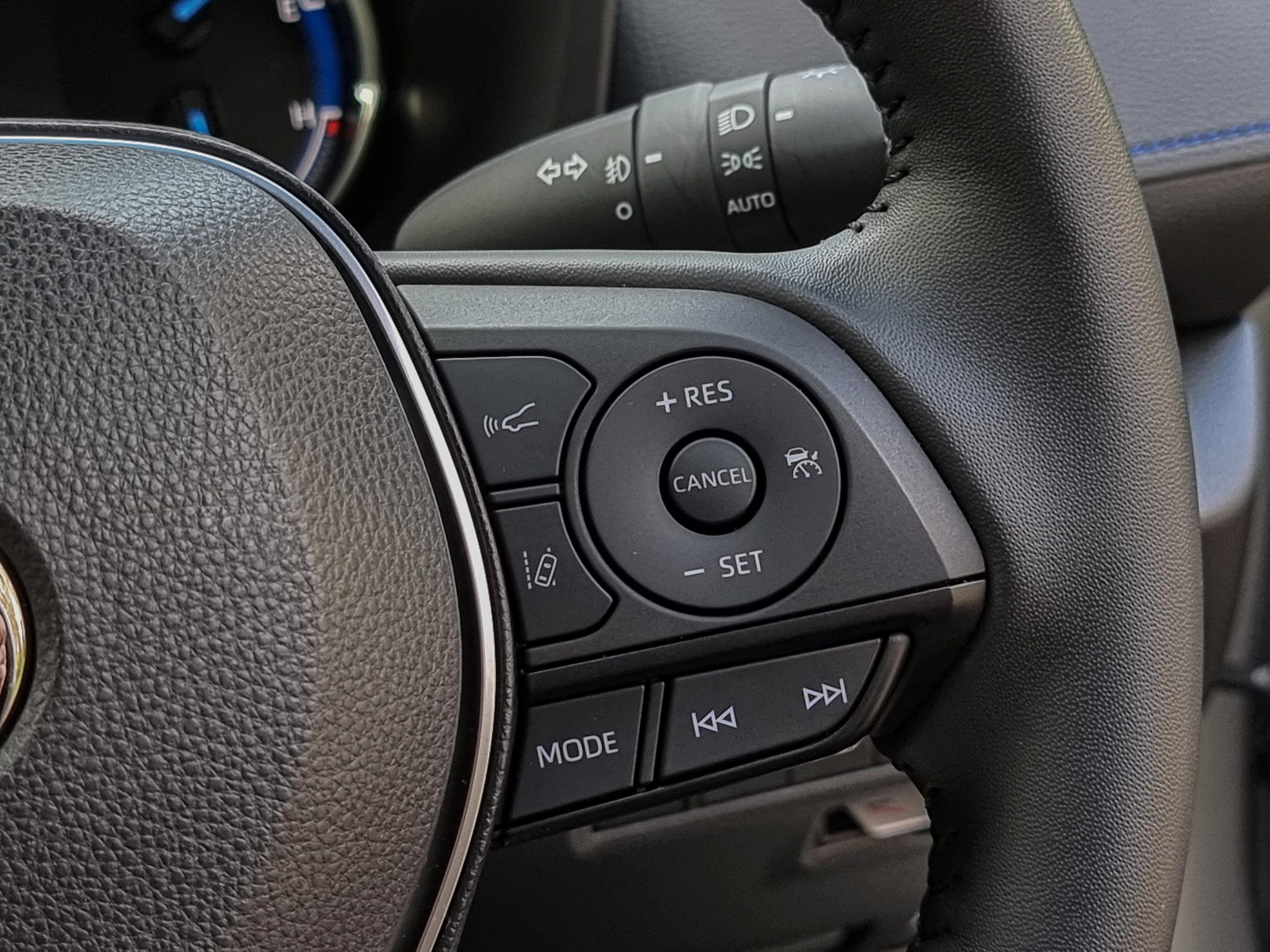
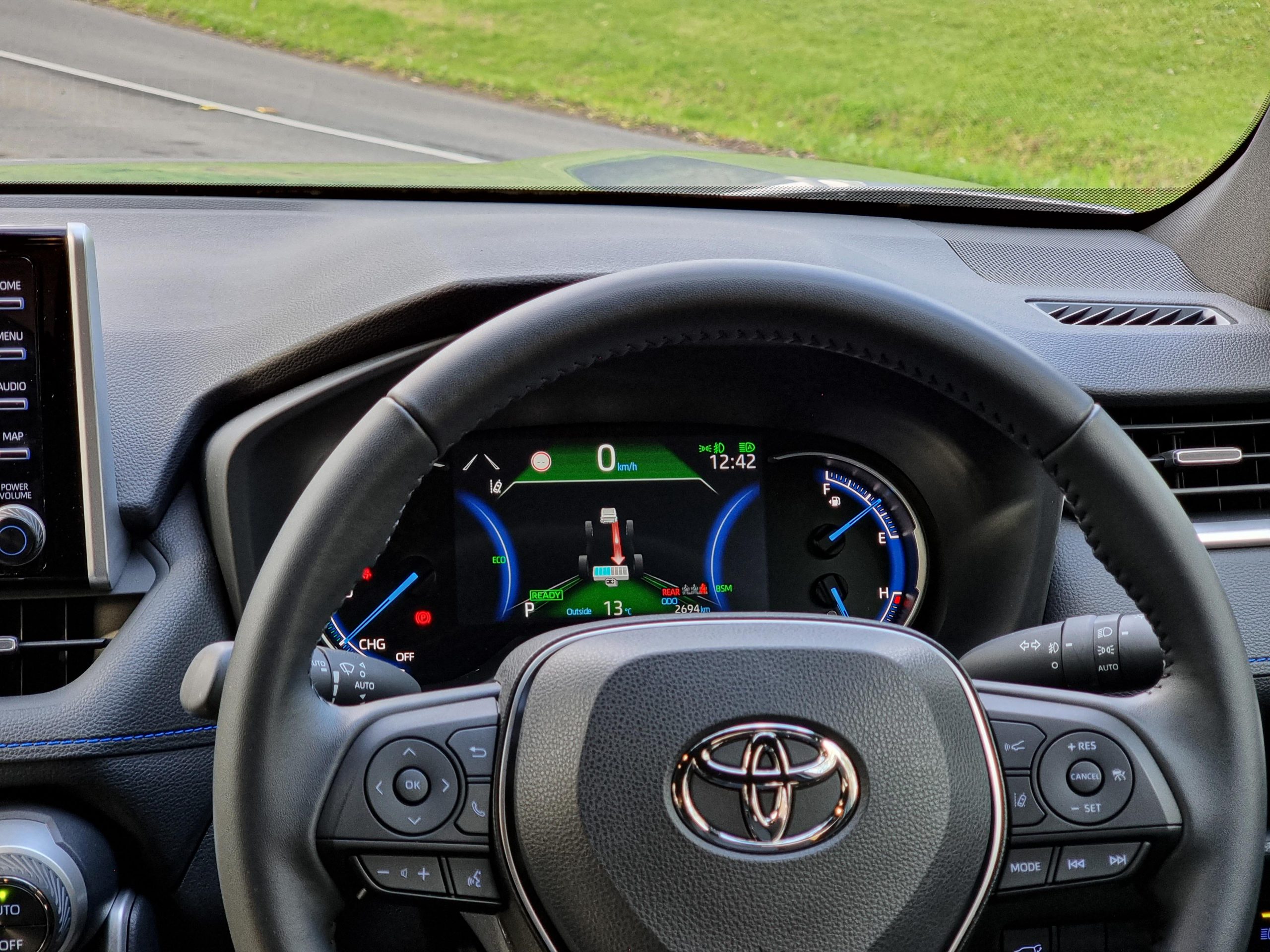
The only non-cost colour for the 2022 Toyota RAV4 XSE is the flat ‘Glacier White’, while ‘Mineral Blue’, ‘Silver Sky’ and ‘Graphite’ (grey) premium options are also available for no cost. A black roof is standard.
There are plenty of similarly sized and well equipped SUVs that compete with the RAV4. Focussing on its direct rivals, we’d consider some diesel competitors to the RAV4, including the Hyundai Tucson Elite Diesel from around $50,000 drive-away and the Mazda CX-5 Touring Active Diesel from around $50,600 drive-away. The Tucson Elite beats the RAV4’s spec with real leather seats, a larger touchscreen and comes with AWD as standard, which is married with its rather excellent and punchy diesel engine. The CX5 Touring Active comes with AWD too and a supple, albeit aged interior.
Performance & Economy: 9/10
Under the bonnet of the 2022 Toyota RAV4 Hybrid XSE sits the Japanese brand’s well renowned hybrid system, marrying an electric motor with a 2.5-litre naturally aspirated ‘Dynamic Force’ engine. The electric motor puts out 88kW with 202Nm of torque, and the petrol motor adds 131kW at 5700rpm and 221Nm of torque between 3,600rpm and 5,200rpm. Toyota quotes a combined output of 160kW.
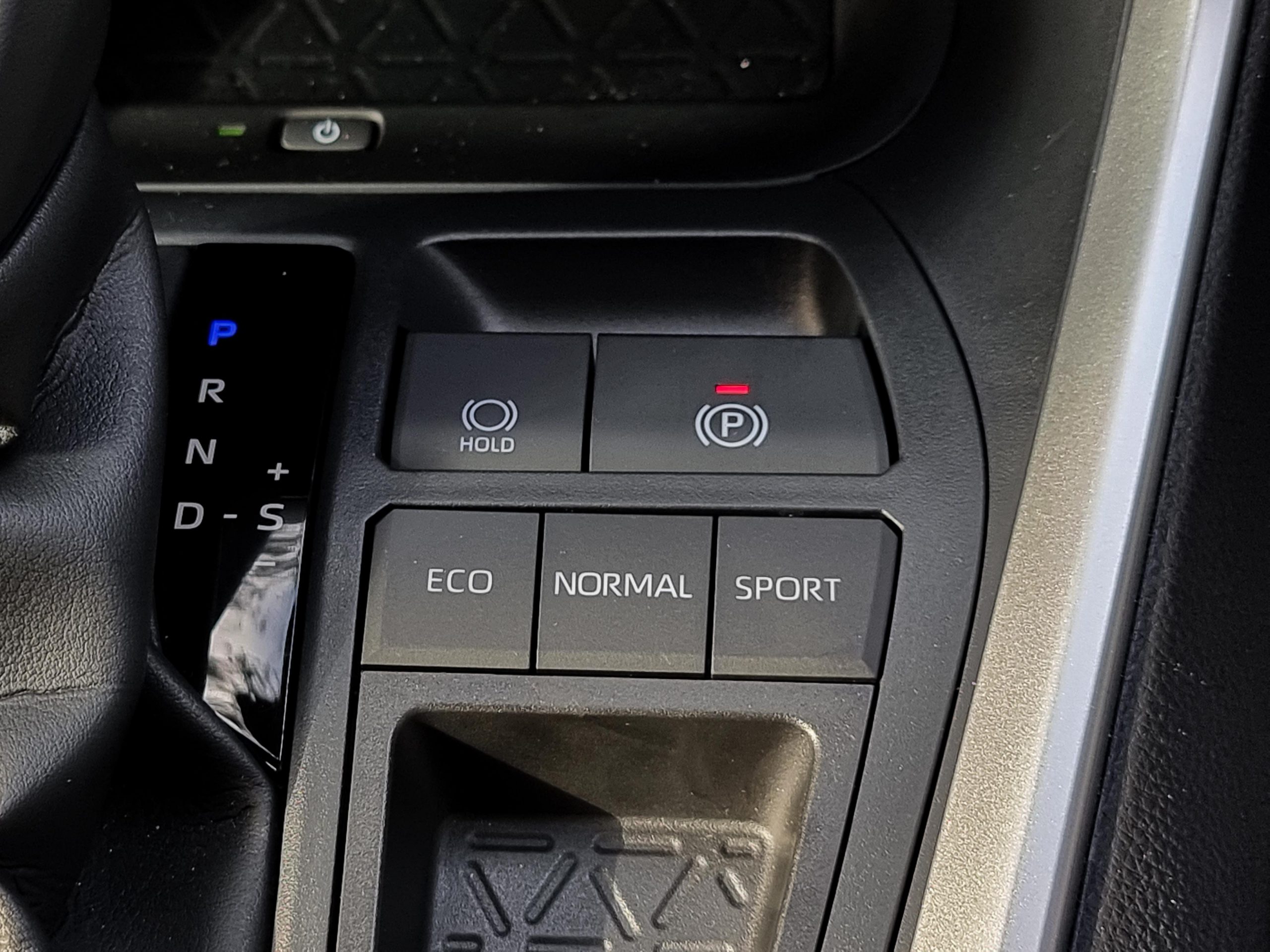
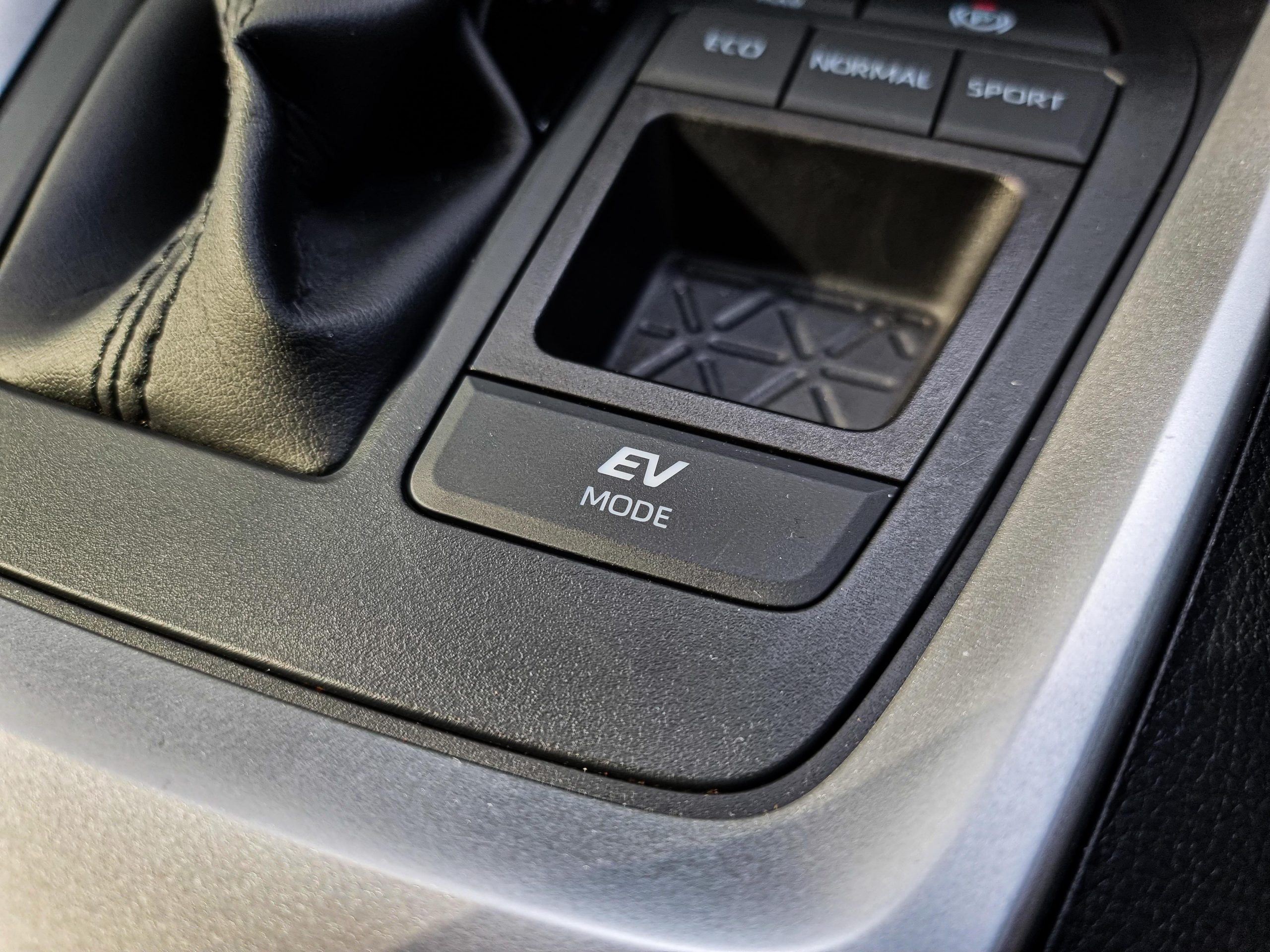
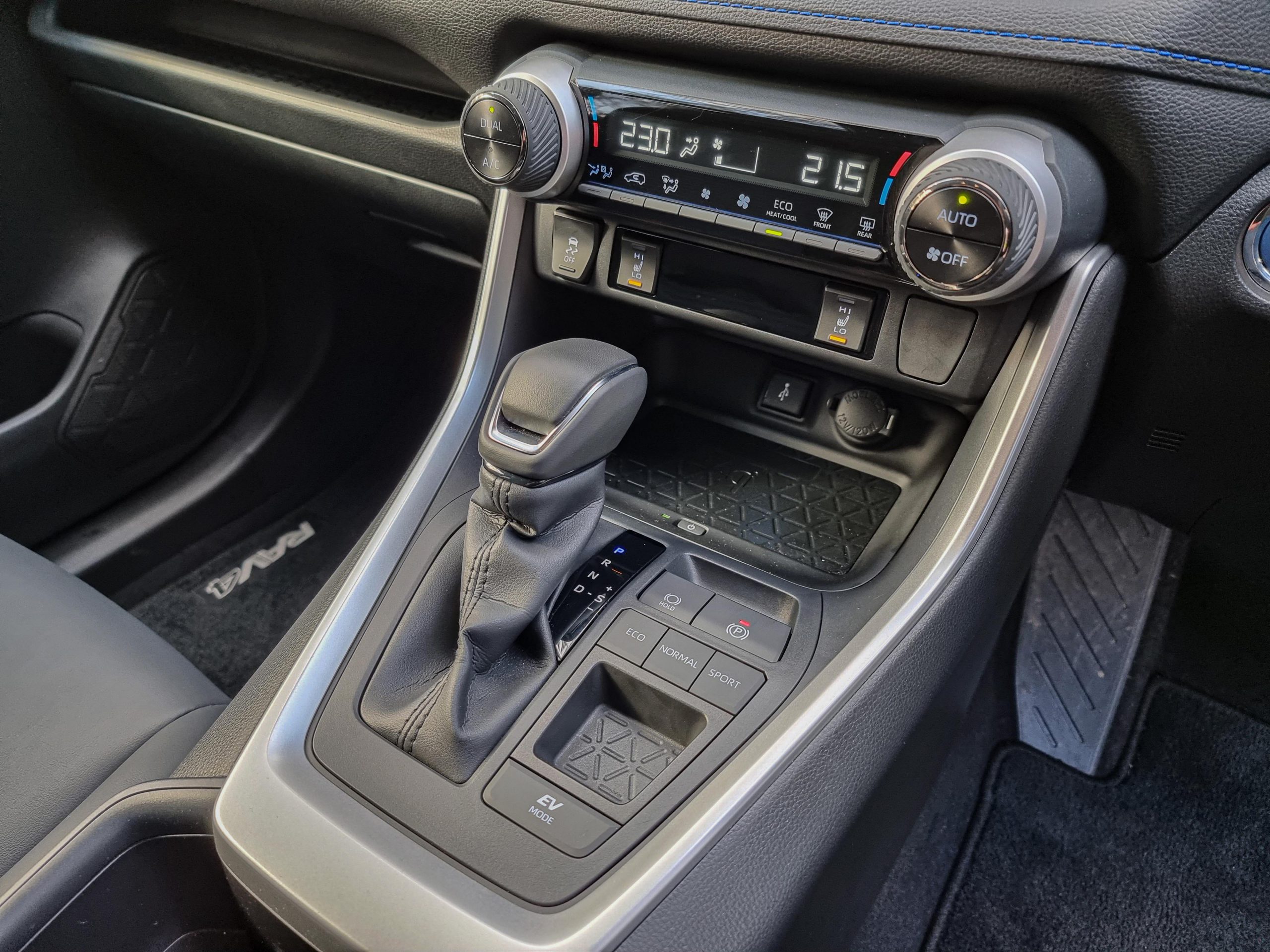
At the heart of the RAV4 Hybrid is a nickel metal hydride battery mounted under the rear seats. The battery provides power for the electric motor and is usually charged when braking and if braking alone wasn’t enough, when idling with the petrol engine running or when cruising at higher speeds. The system is designed to maximise fuel efficiency and works brilliantly and unobtrusively. Toyota has managed to create a hybrid system which gives an exceptional blend of performance and economy depending on the driving conditions at any given moment.
When driving around town and car parks and when only light acceleration is required, the electric motor does the lifting and makes the RAV4 feels super smooth and eerily quiet at low speeds. When asking for more acceleration, the petrol engine kicks in seamlessly to work in tandem with the electric motor. At freeway speeds, the petrol engine does most of the work and will actually turn off when lifting off the accelerator. When braking, the electric motor has the function of decelerating the RAV4, funneling energy back into the battery to be used when setting off again. Brilliant. What’s even better, is that all of this happens with no driver involvement, behind the scenes.
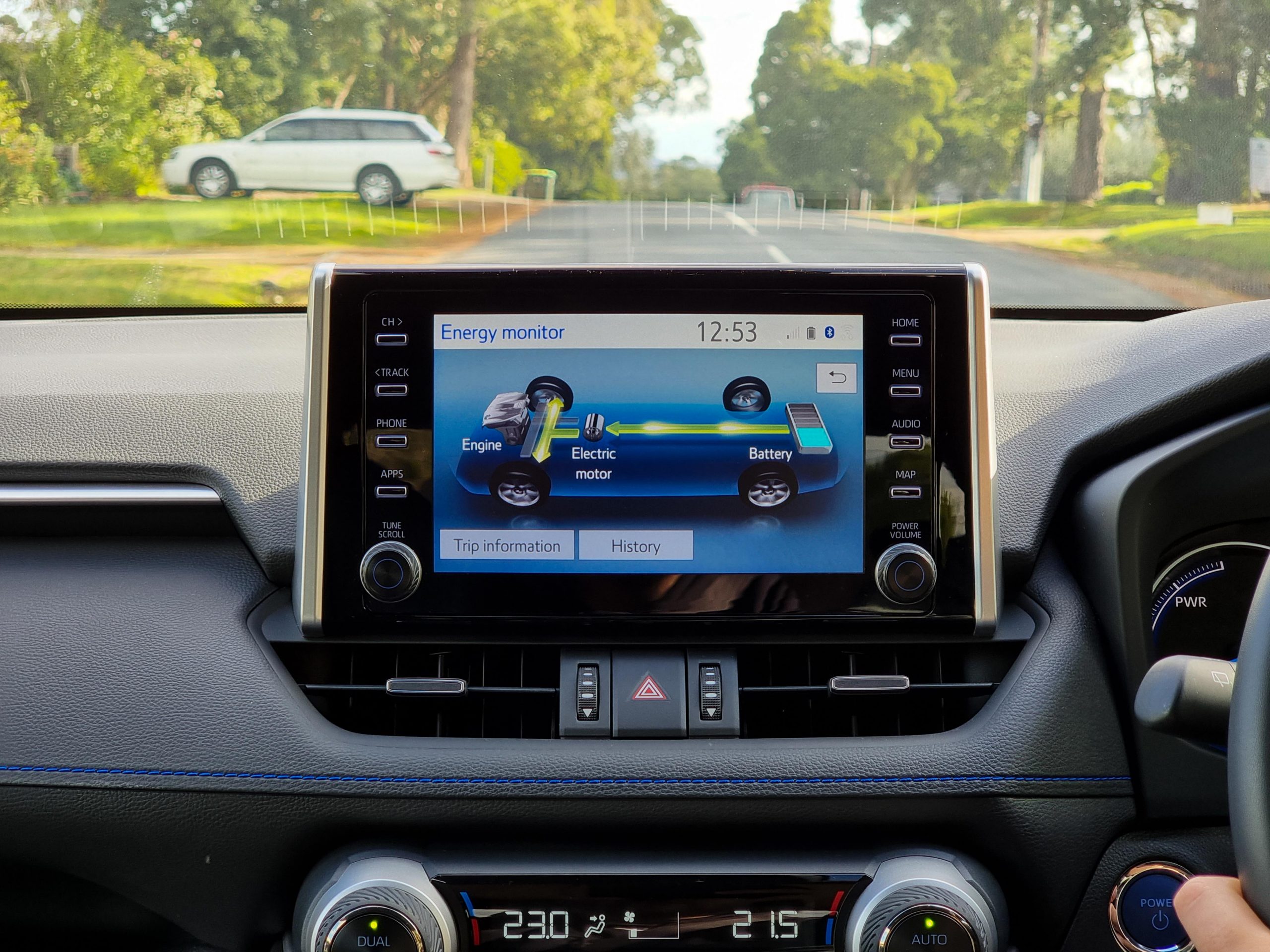
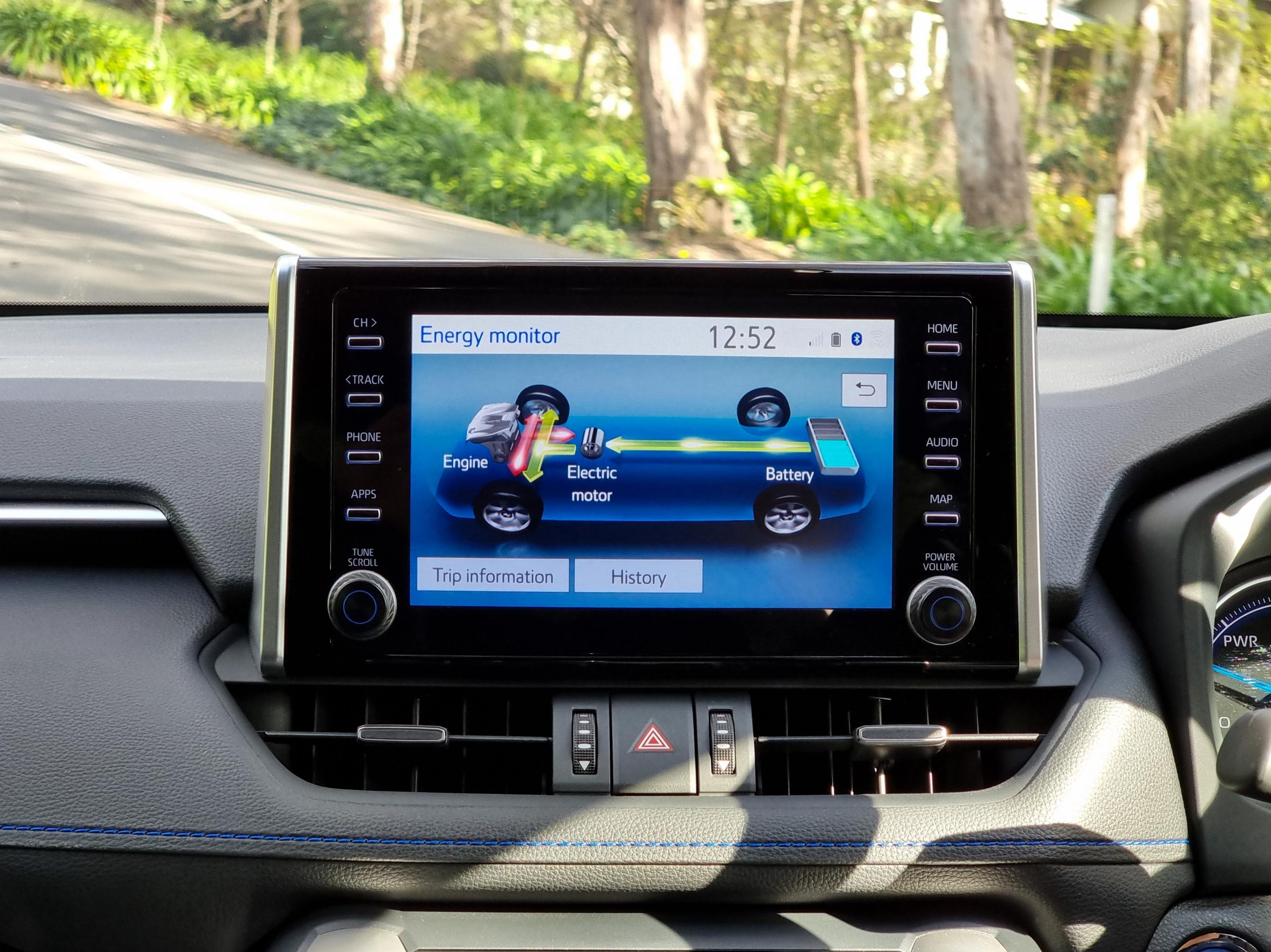
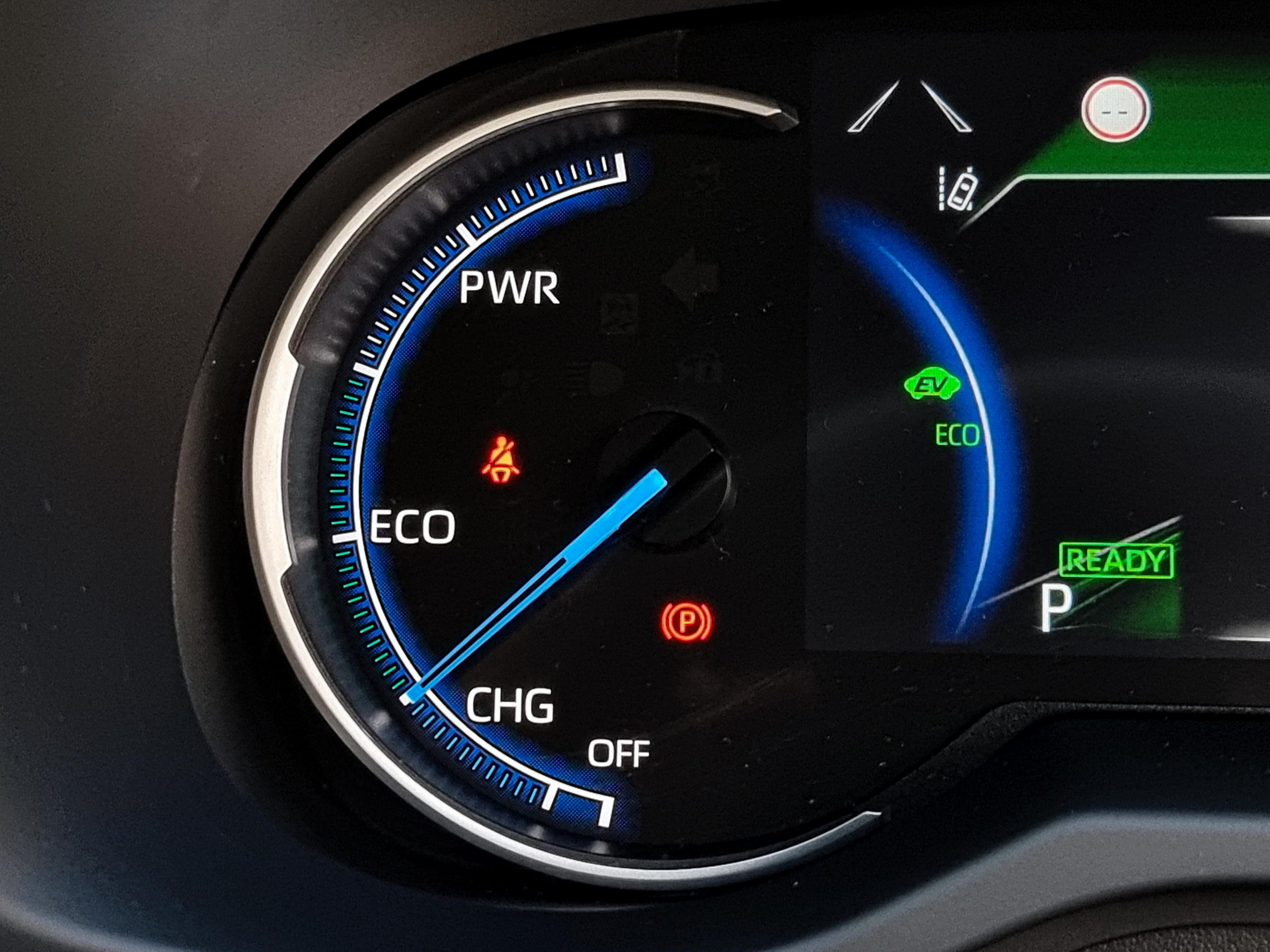
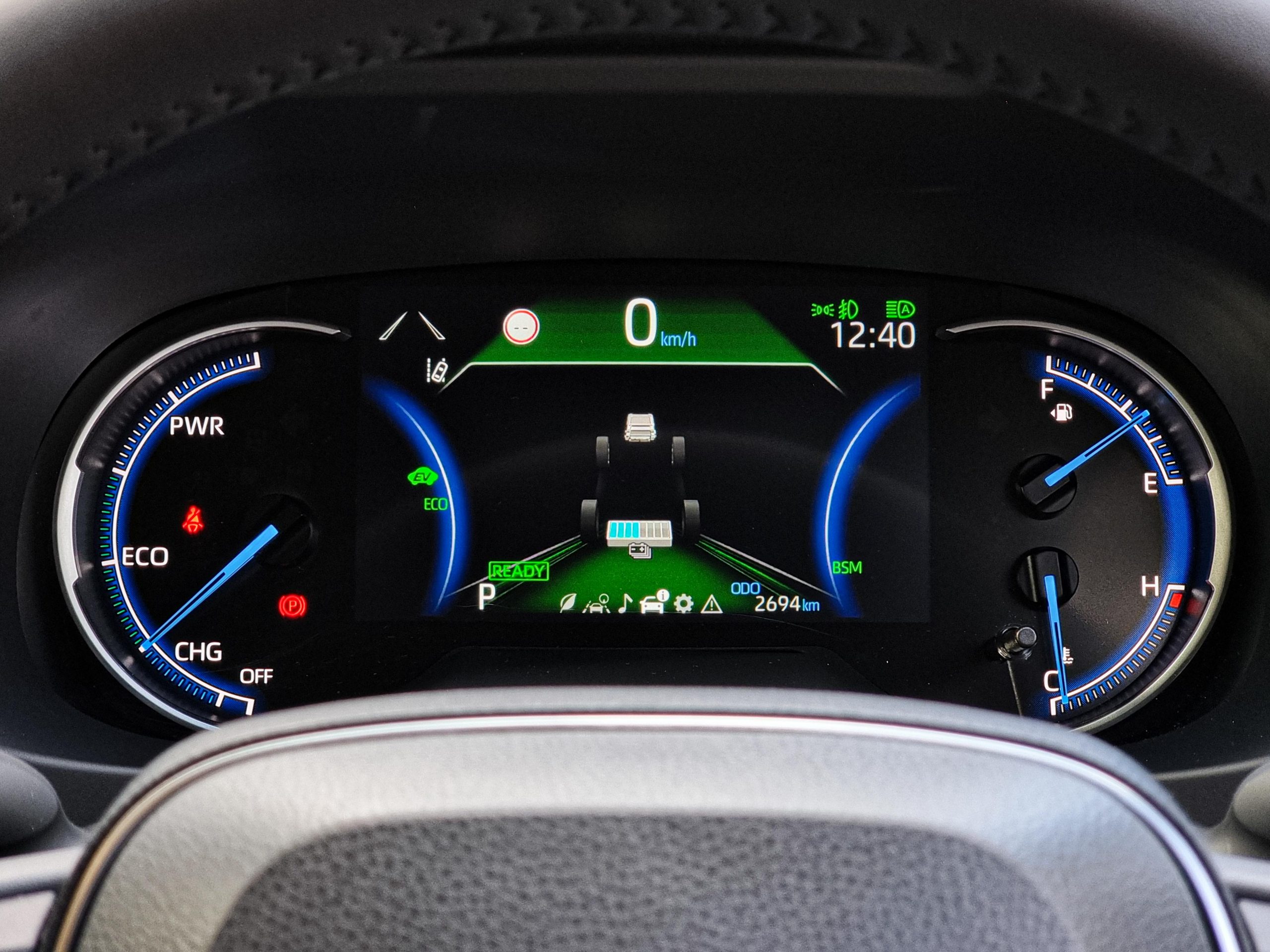
The RAV is sprightly around town and even on the open road with the electric motor boosting the petrol engine’s torque output noticeably. Apart from some slight hesitation when flooring it from standstill and quite a bit of noise during strong acceleration, the RAV4 drivetrain is close to flawless. The 0-100km/h sprint time takes around 8 seconds and the RAV4 proves hybrids don’t have to be slow.
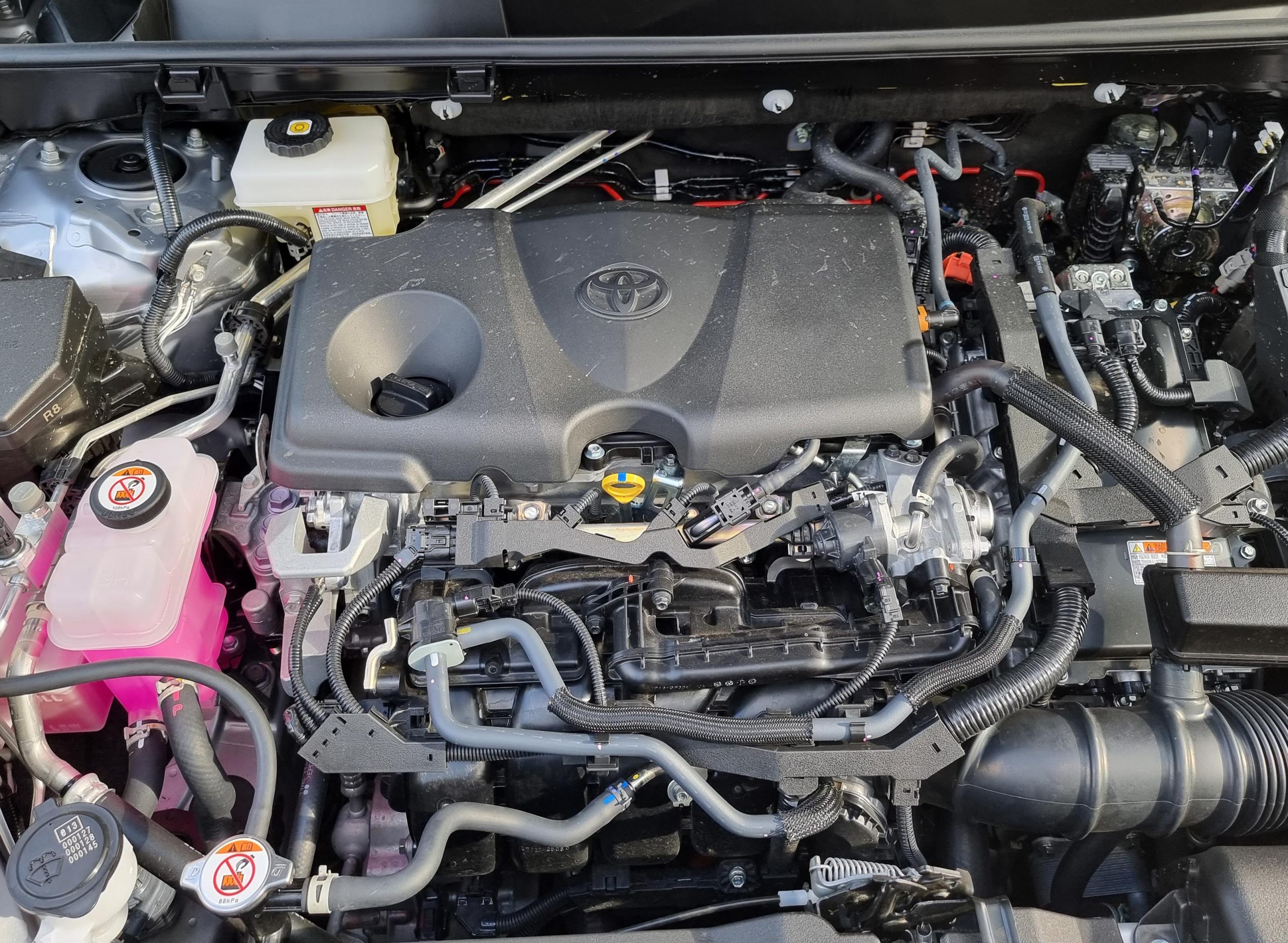
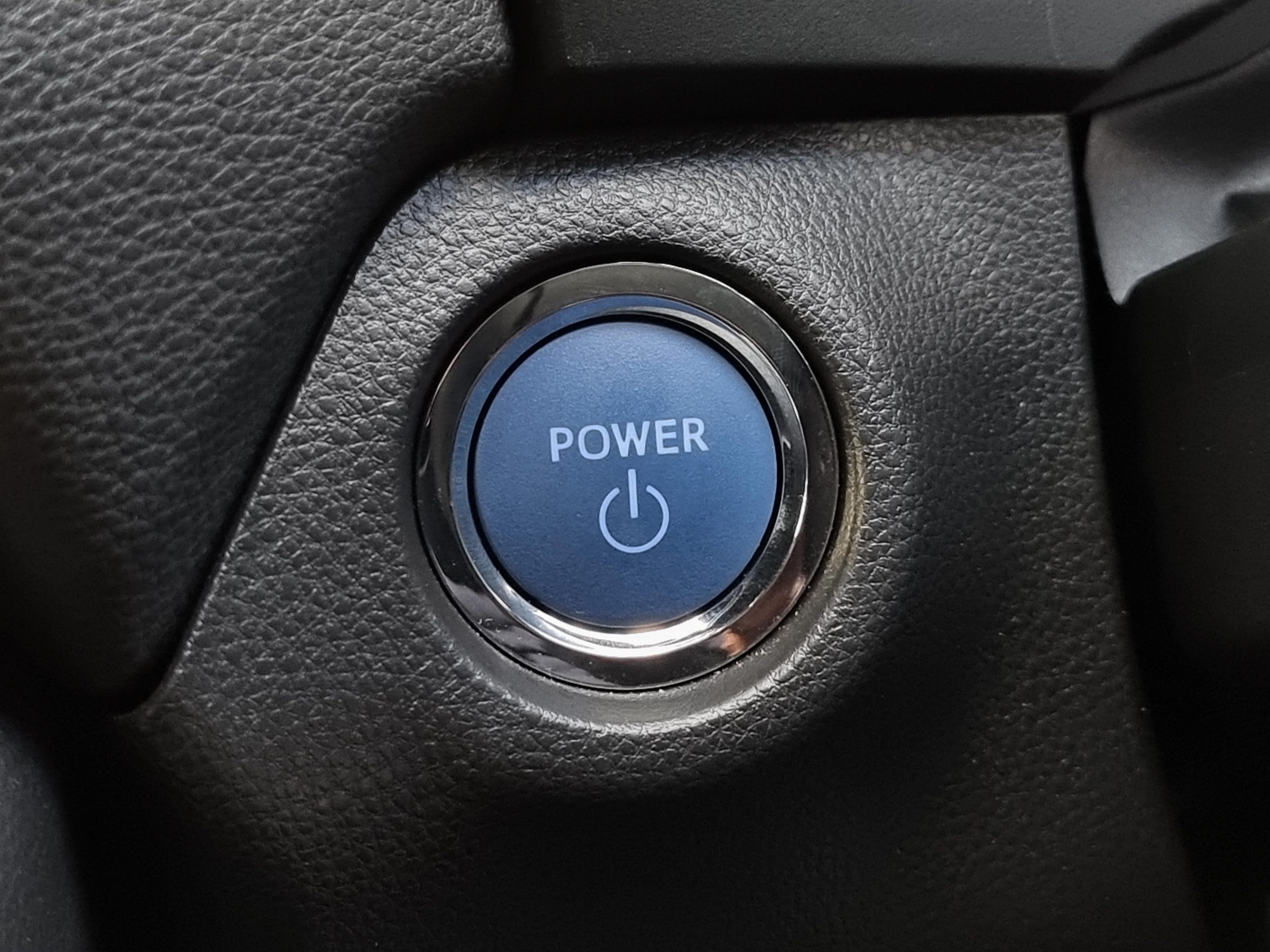
We managed to achieve an average of 5.2L/100km across both urban and highway driving with some spirited stints in between. This is an incredible figure for a car of this size and the very reason why the RAV4 Hybrid remains so popular. Toyota claims a fuel consumption figure of 4.7l/100km – it’s remarkable how close to that we got during our week with the RAV4, and we certainly think Toyota’s claim can be matched with smoother driving. With fuel prices ever creeping upwards, RAV4 buyers have much to look forward to.
Ride & Handling: 8.5/10
Toyotas of old well dull and dreary to drive. This new RAV4 is a revelation compared to the models before it and proves family SUVs can also be good fun on a windy road. Through corners the RAV4 feels extremely well sorted, with well judged damping and the ride hits an almost perfect balance between comfort and sportiness.
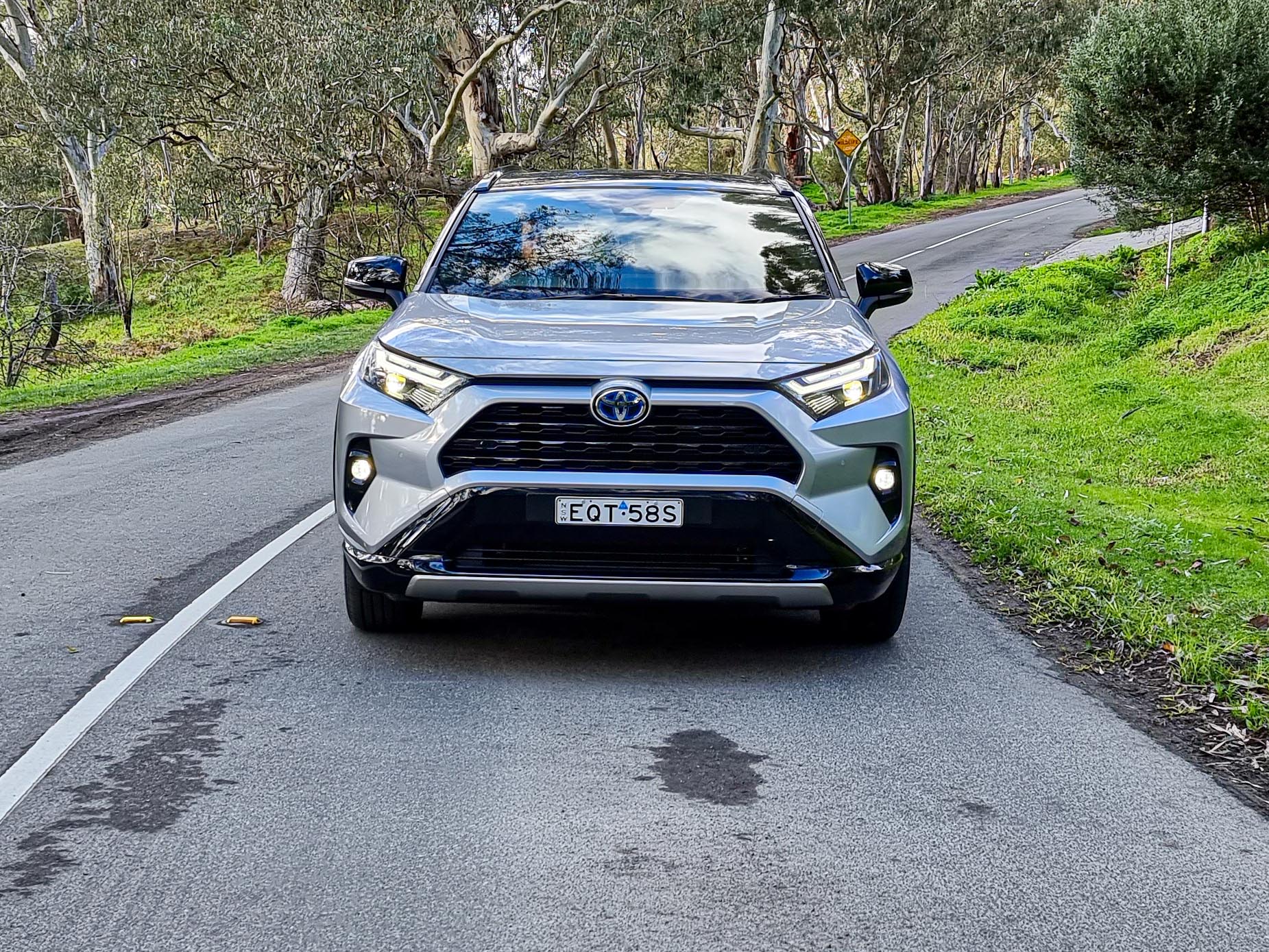
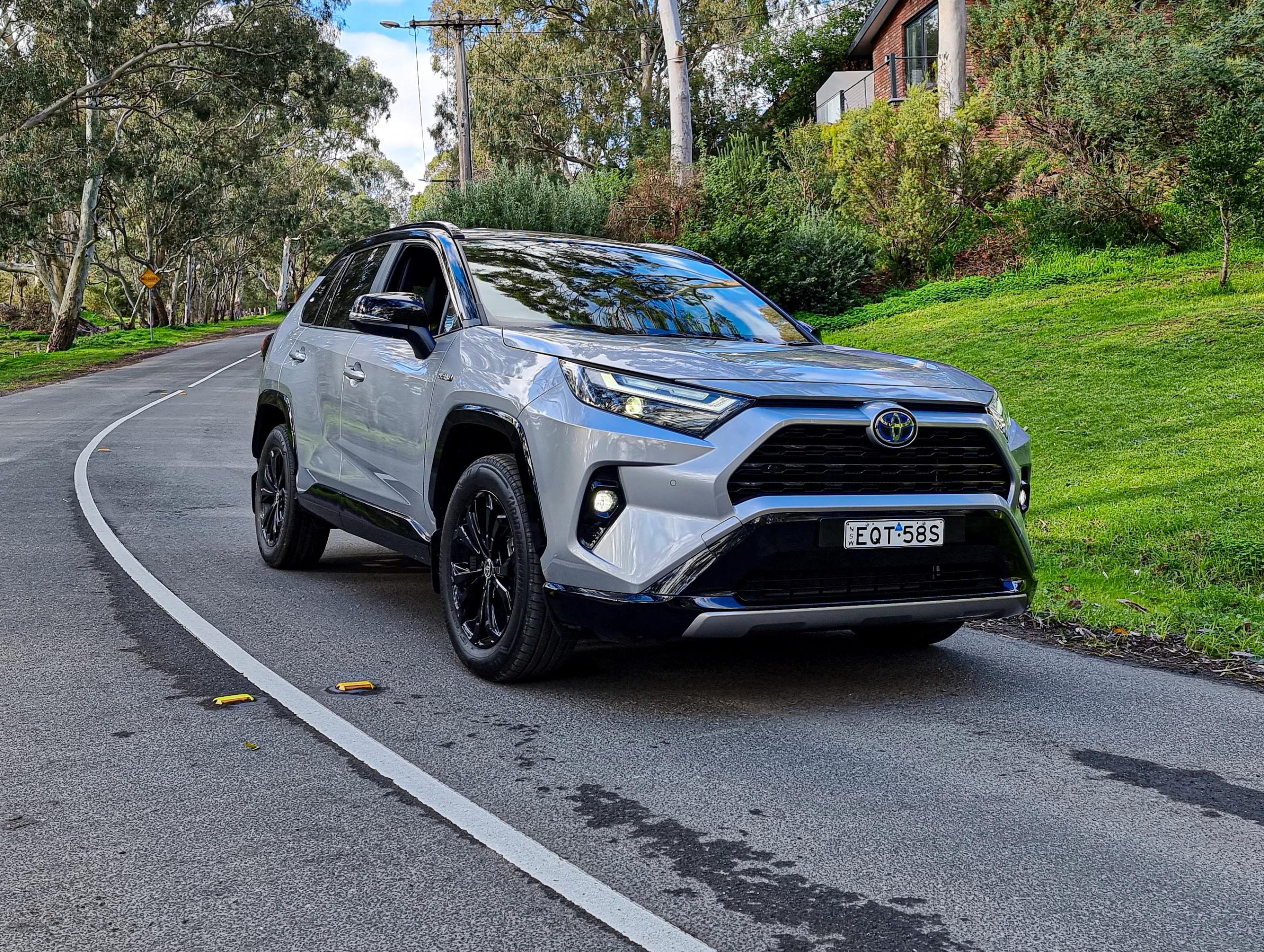
Point the RAV4 at a roundabout and it’ll turn in sharply, hold its line thanks to good grip from the Bridgestone Alenza tyres and leave you smiling. It’s no sports car, but it does provide some fun behind the wheel. The steering is beautifully weighted, without feeling quite as connected to the road as the CX-5. Either way, we’re glad Toyota has rekindled some joy in all of its cars to keep keener drivers happy.
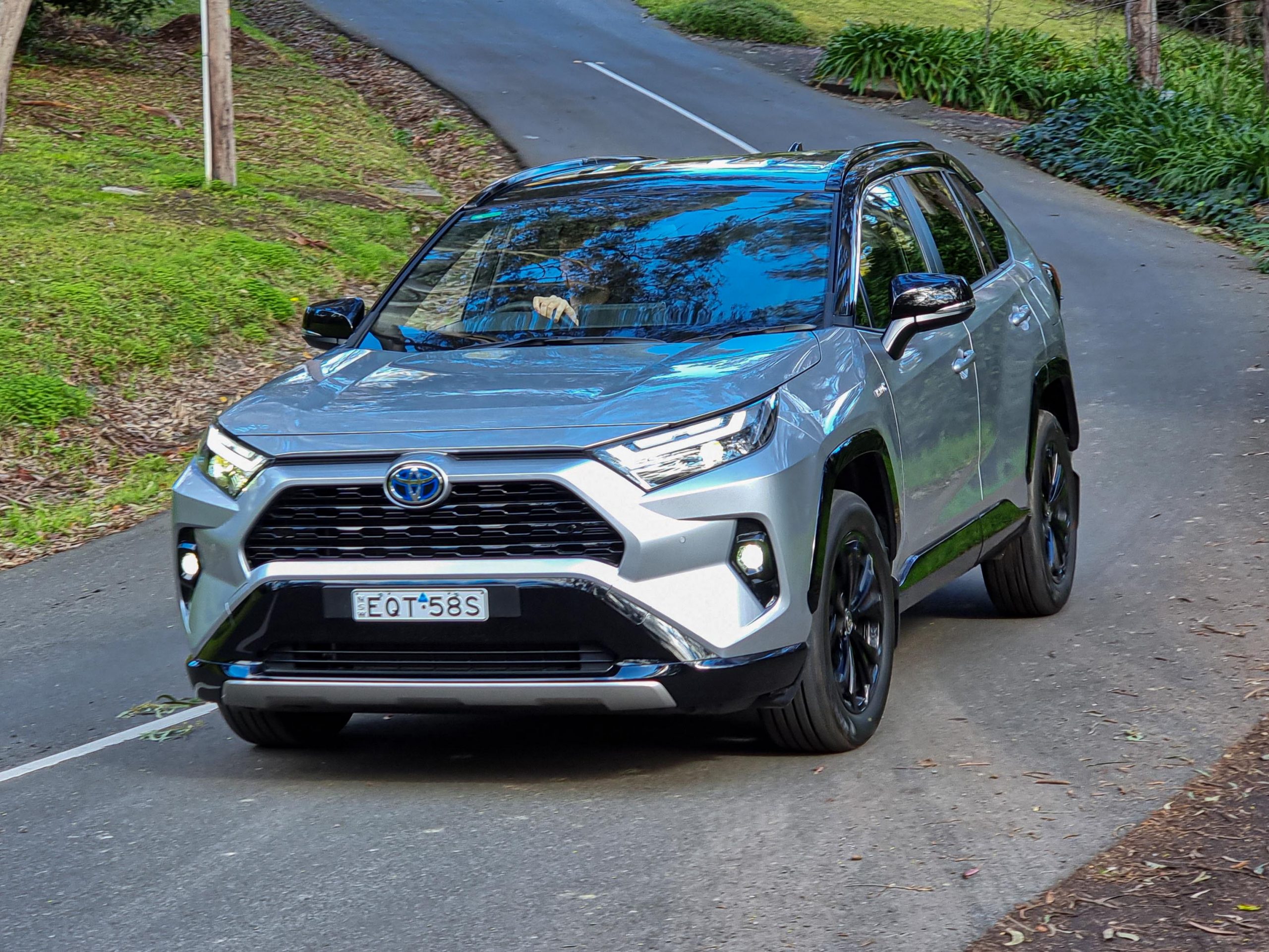
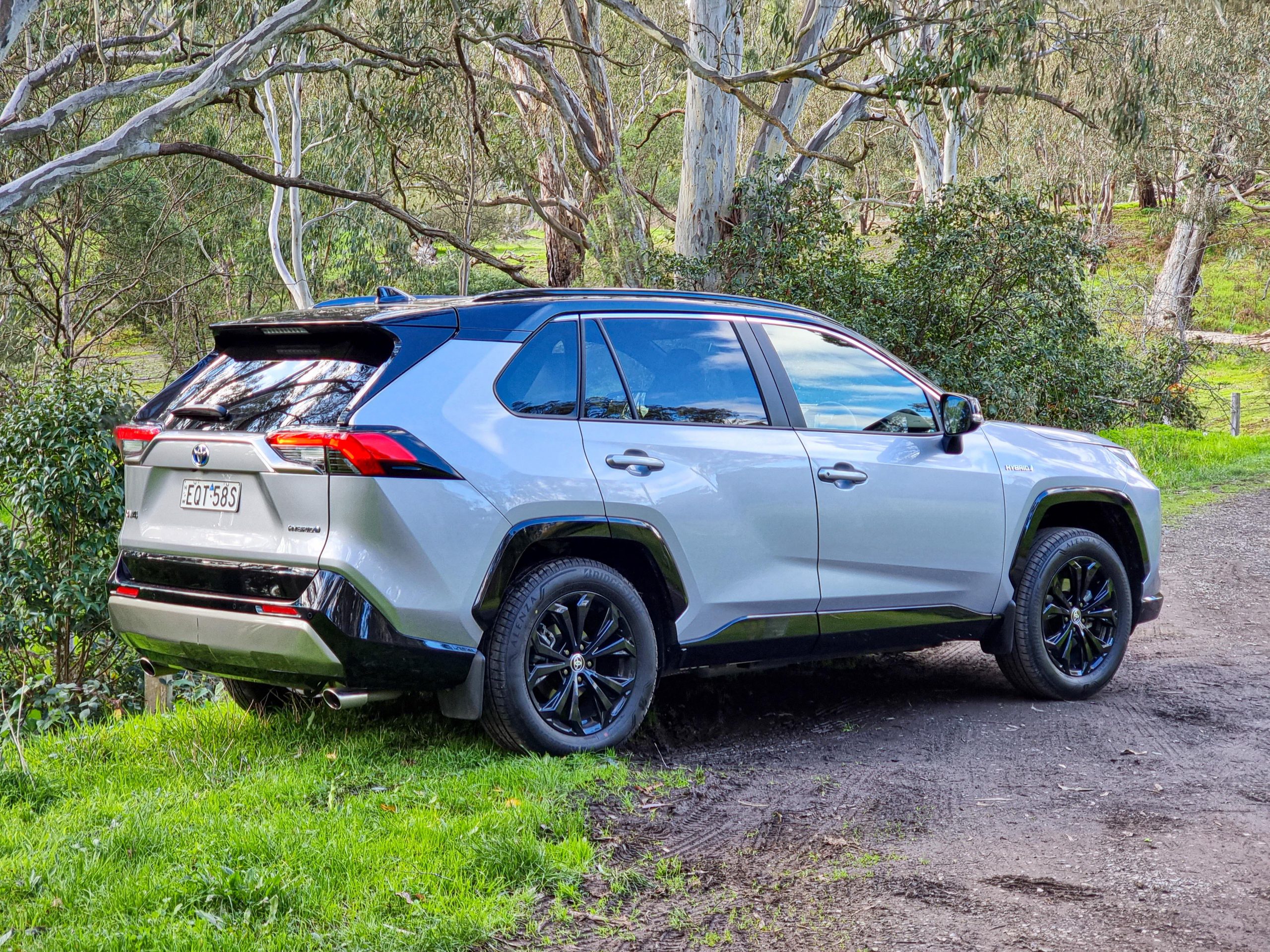
Ride comfort is relatively high around town where the suspension takes the edge off even challenging bumps, and noise levels are kept low. When crawling around carparks, the RAV4 is silent, thanks to running off electric power alone. At higher speeds, the only black mark against the car’s refinement is some coarse chip road roar and some wind whistle around the door mirrors.
Interior & Practicality: 8/10
Stepping inside the 2022 Toyota RAV4 XSE Hybrid reveals a simple but functional interior which has been created to be as practical and comfortable as possible. The interior might not take home any awards for flamboyant design, but it does come with neat touches. The RAV4 XSE’s interior has a dark vibe running inside thanks to the black headlining on the roof and dark door trims, accented by SofTex leatherette trim with blue stitching. The seats are also covered in leatherette material and have a premium feel when touched, even if they aren’t made from real leather. The seats themselves provide the perfect amount of support and the driver’s position has a good amount of adjustability, unlike cars such as the Volkswagen Tiguan which almost feel minivan like in the way the driver sits.
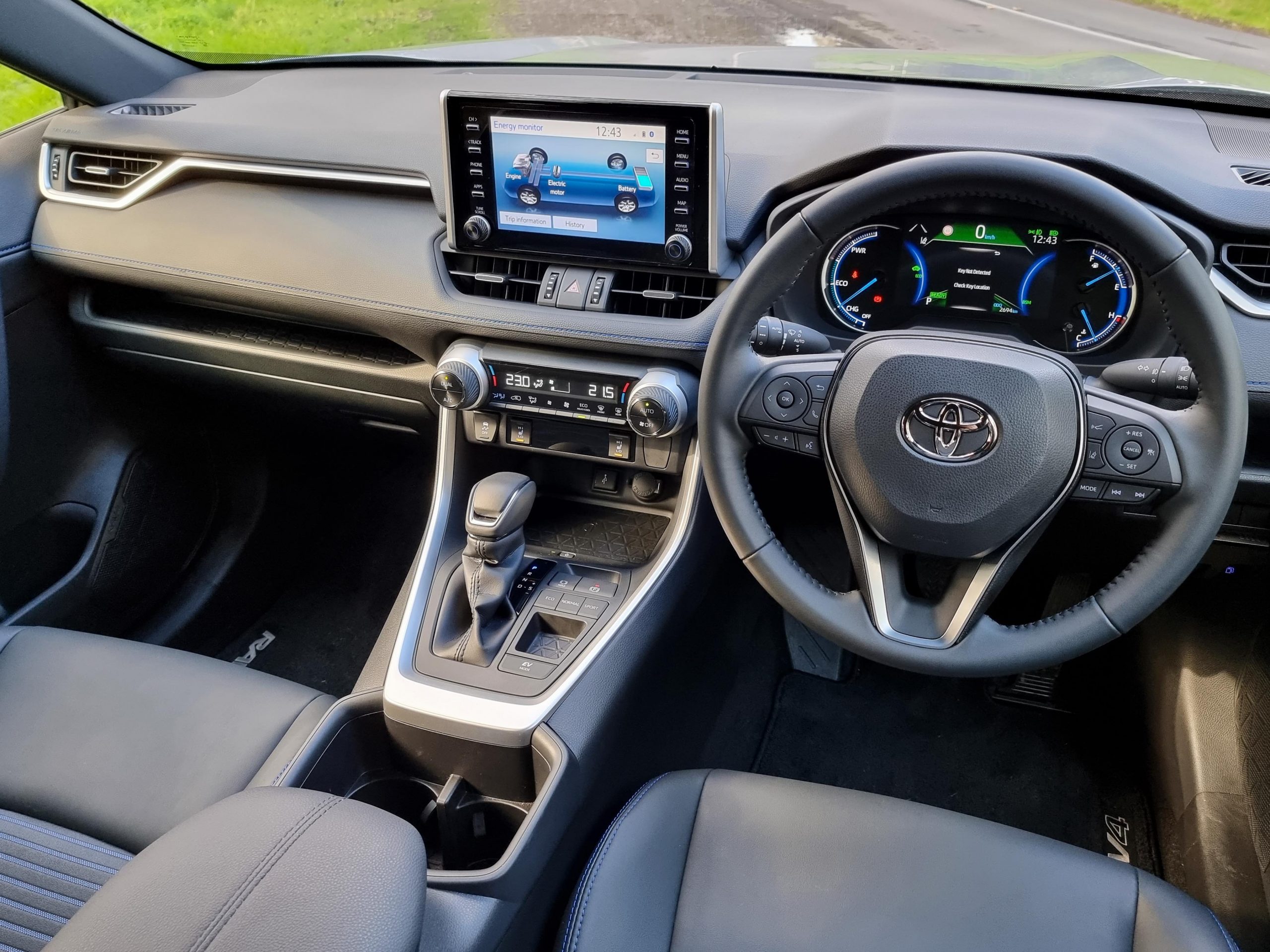
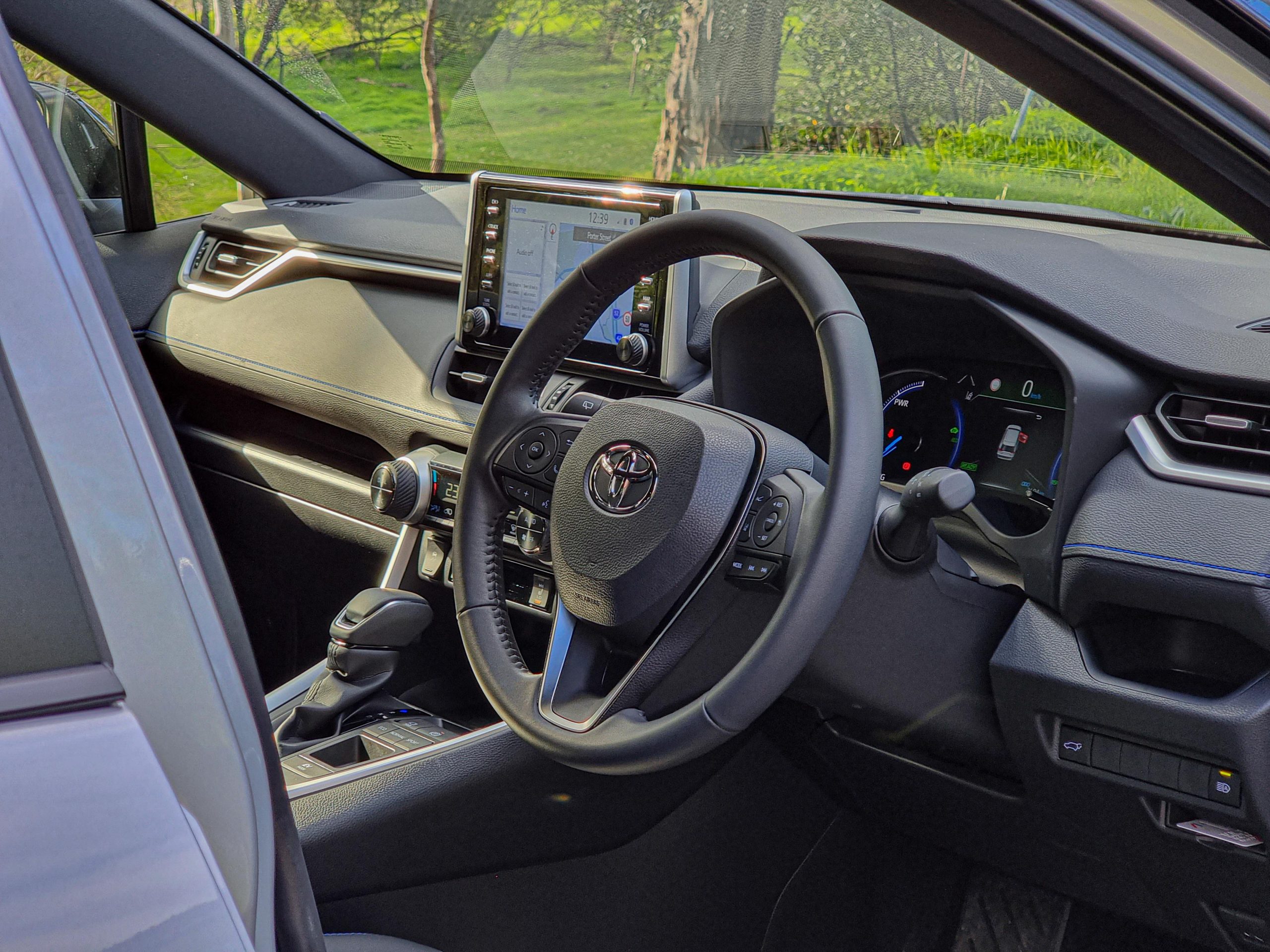
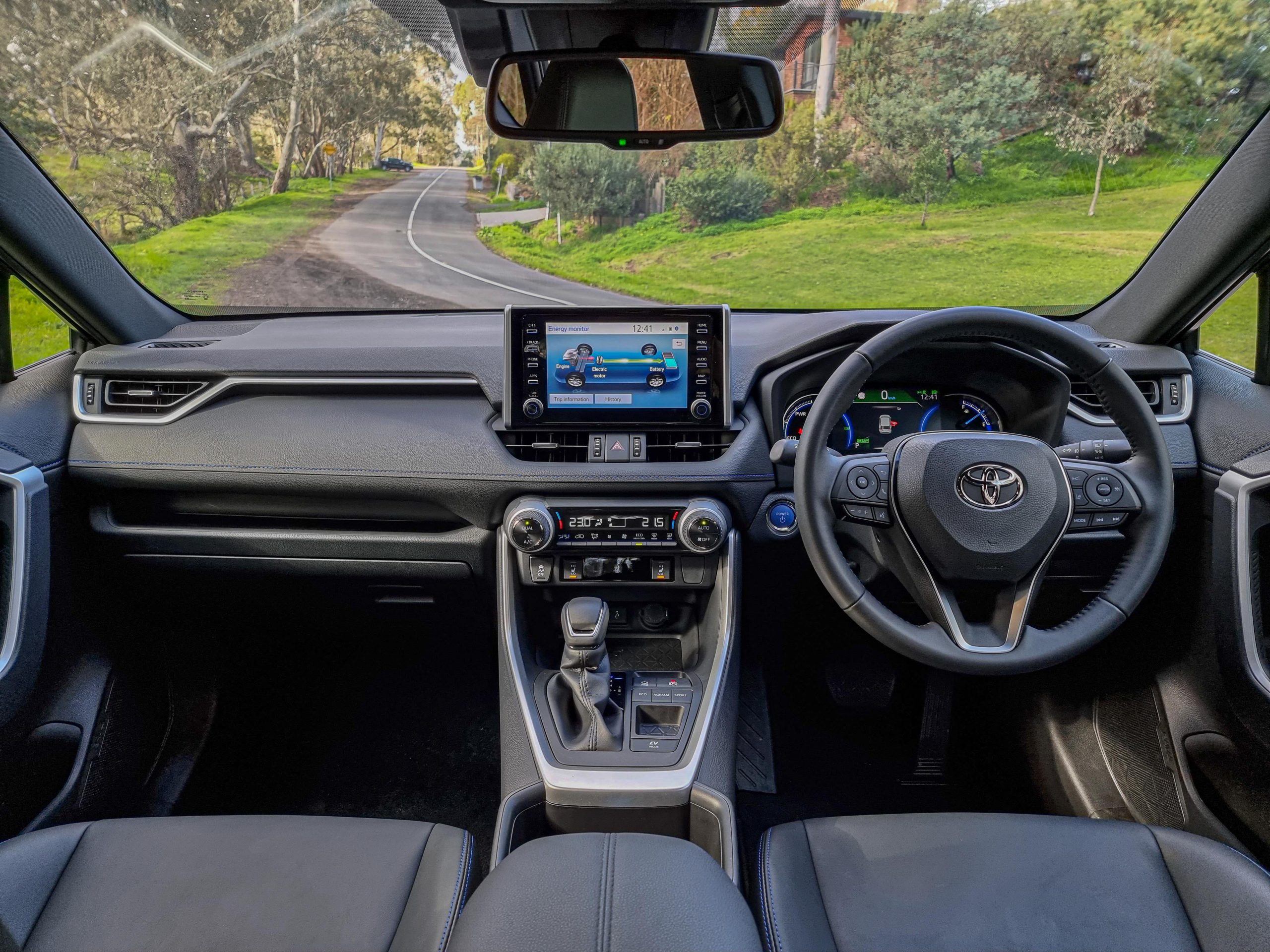
Quality is generally high throughout the cabin with the leather on the steering wheel feeling plush and hear wearing, while the dashboard and the centre console and door trims all feel soft to the touch. Some harder plastics are seen throughout the rest of the cabin but they don’t detract too much from the RAV4’s otherwise well executed interior. What the RAV4 doesn’t do is match the premium feeling of the Mazda CX-5’s classy interior and its design isn’t as interesting as that of Koran rivals such as the Kia Sportage with its swooping lines and curvaceous, large touchscreens.
Speaking of screens, the RAV4’s dashboard mounted 8.0-inch colour touchscreen feels like a relic from yesteryear. Yes, it comes with satellite navigation and digital radio, along with wired Apple CarPlay and Android Auto but its blocky buttons flanking its boundaries and the poor screen resolution and brightness all underscore the fact that Toyota’s infotainment is lagging behind leaders such as the Hyundai Tucson or Kia Sportage which have larger and brighter infotainment systems.
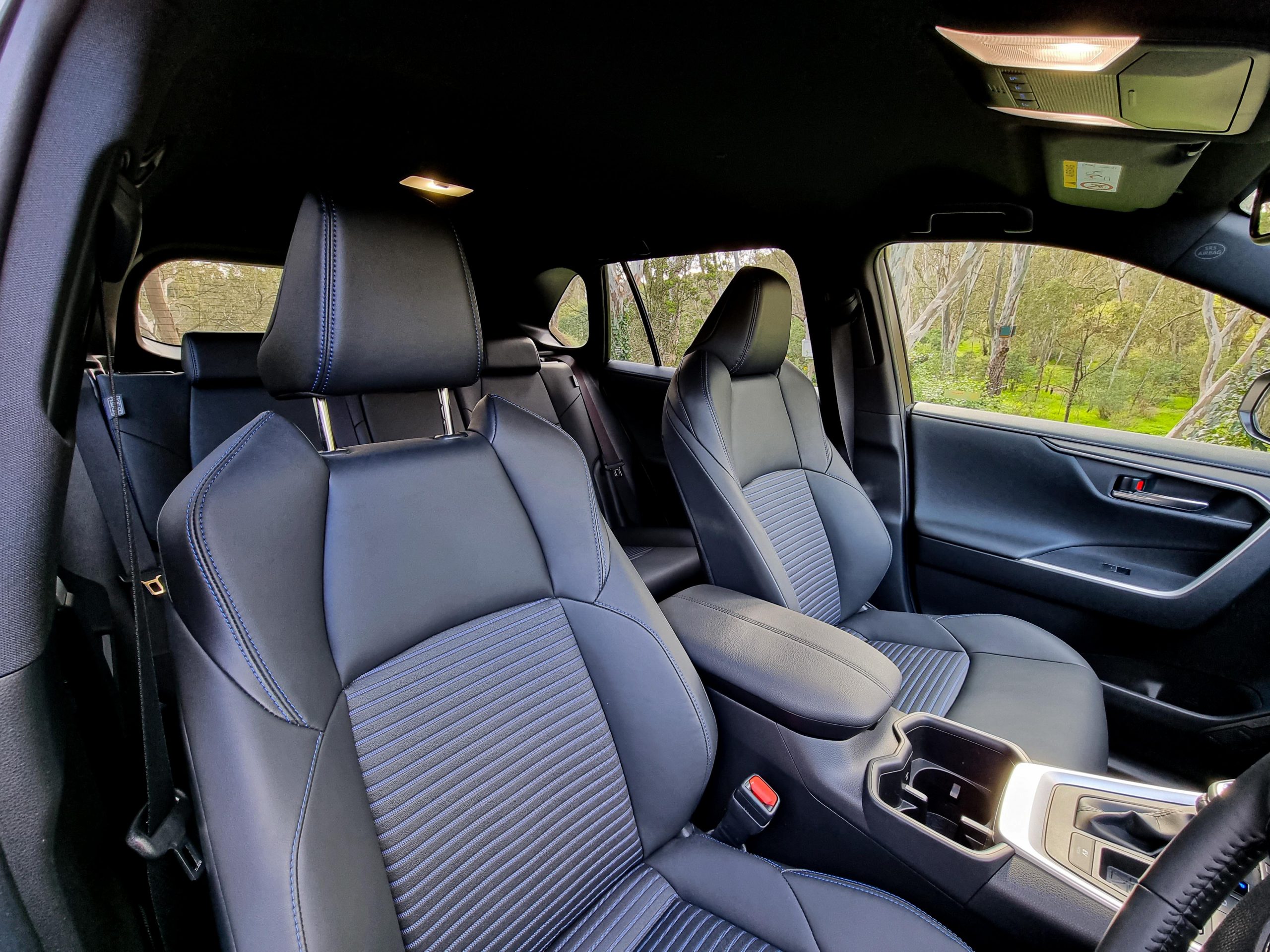
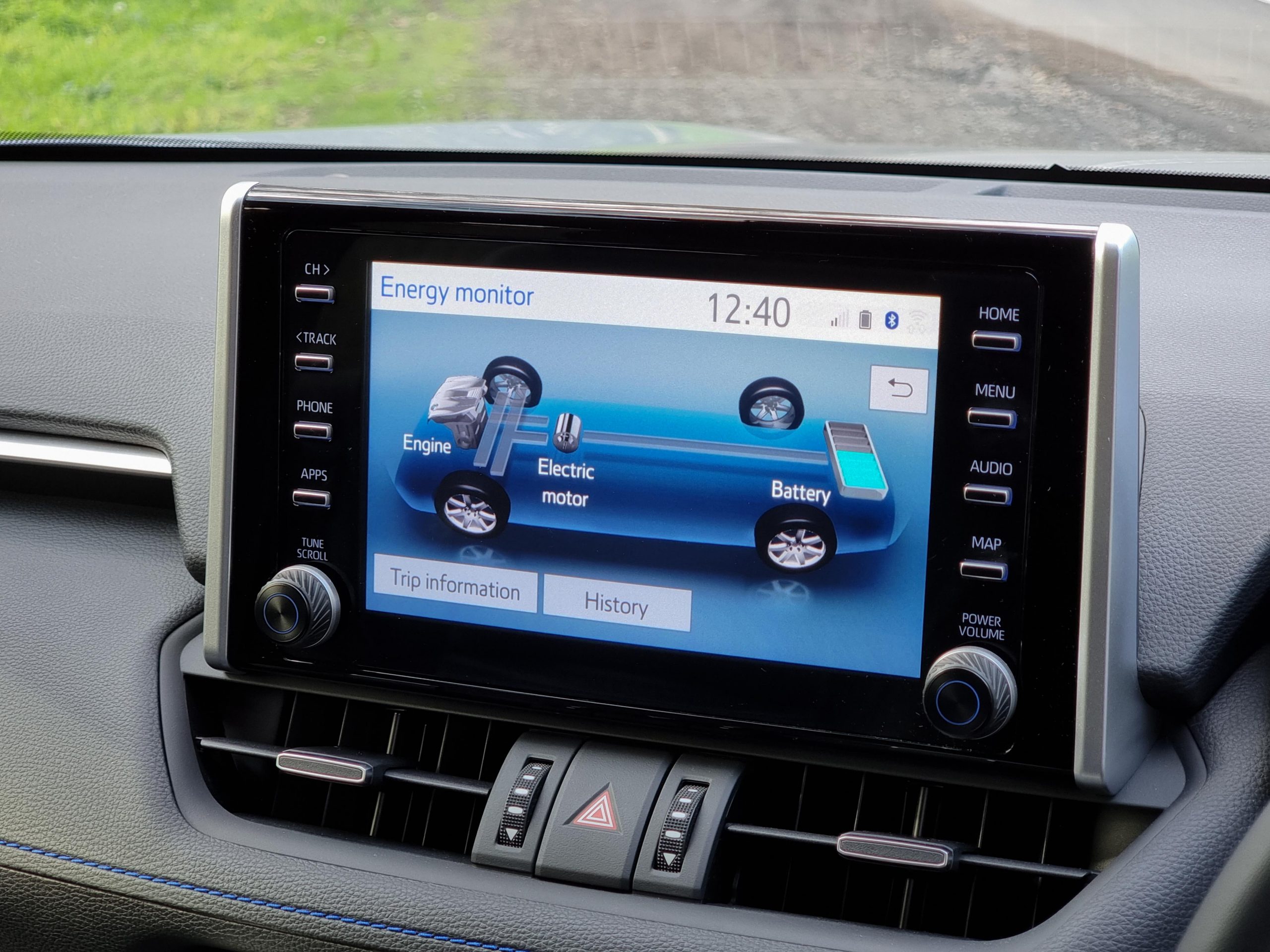
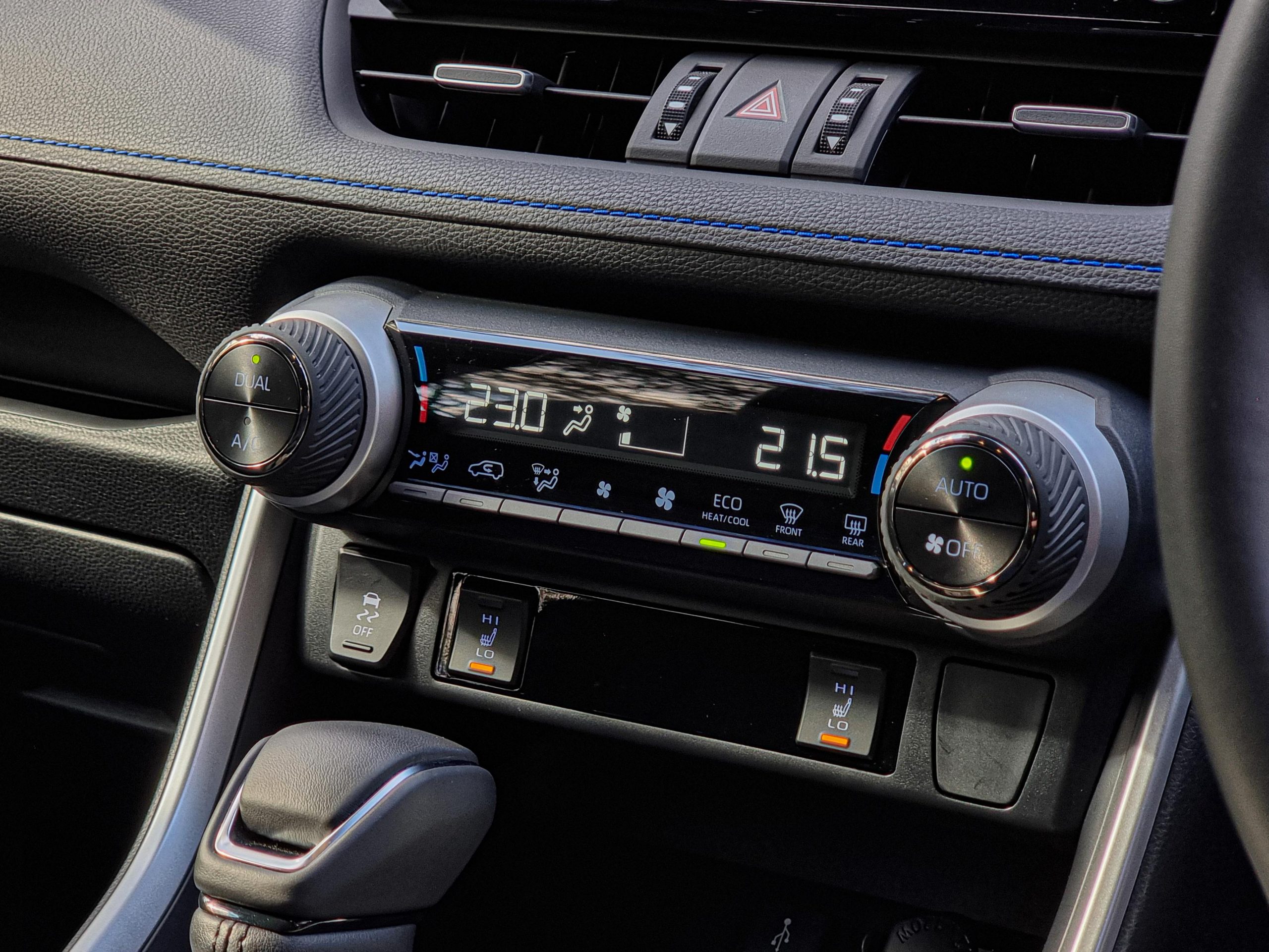
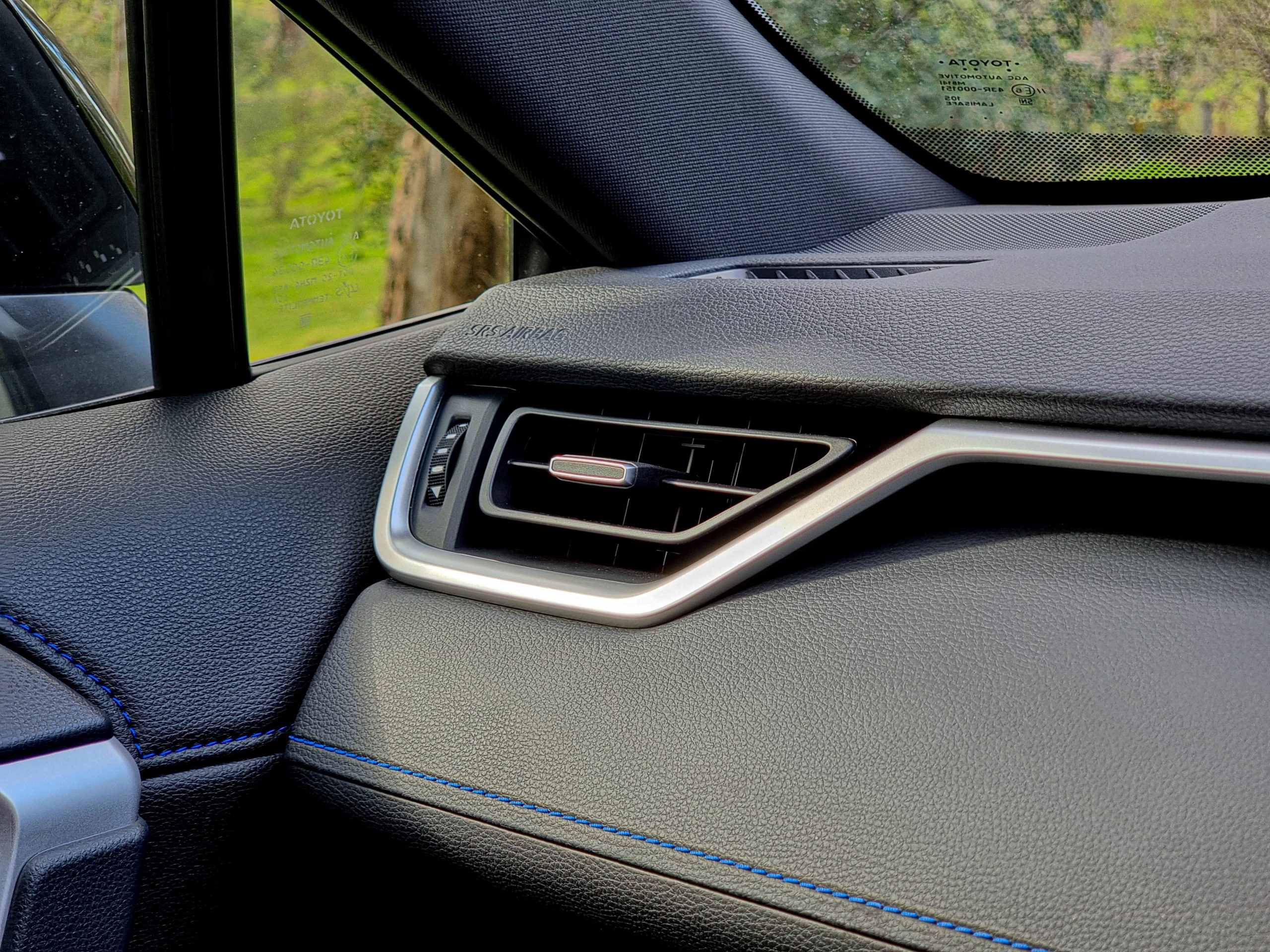
The 7.0-inch instrument cluster display is nestled within the traditional gauge dials on either side of it and shows a plethora of information in a clear and logical way. We can’t wait for a further update to the RAV4 to arrive in the next few months with its larger, more modern screens and fully digital dials.
Space up front is plentiful, with ergonomically placed controls as you’d expect in a Toyota. Even the climate control dials are chunky, meaning you won’t face any of the issues we had during our time with the Volkswagen Golf.
Storage is plentiful with a shelf in front of the passenger, a large glovebox, a cubby in front of the gear lever with a wireless phone charger, two large cupholders in the centre console and large centre console bin with two additional USB-A ports.
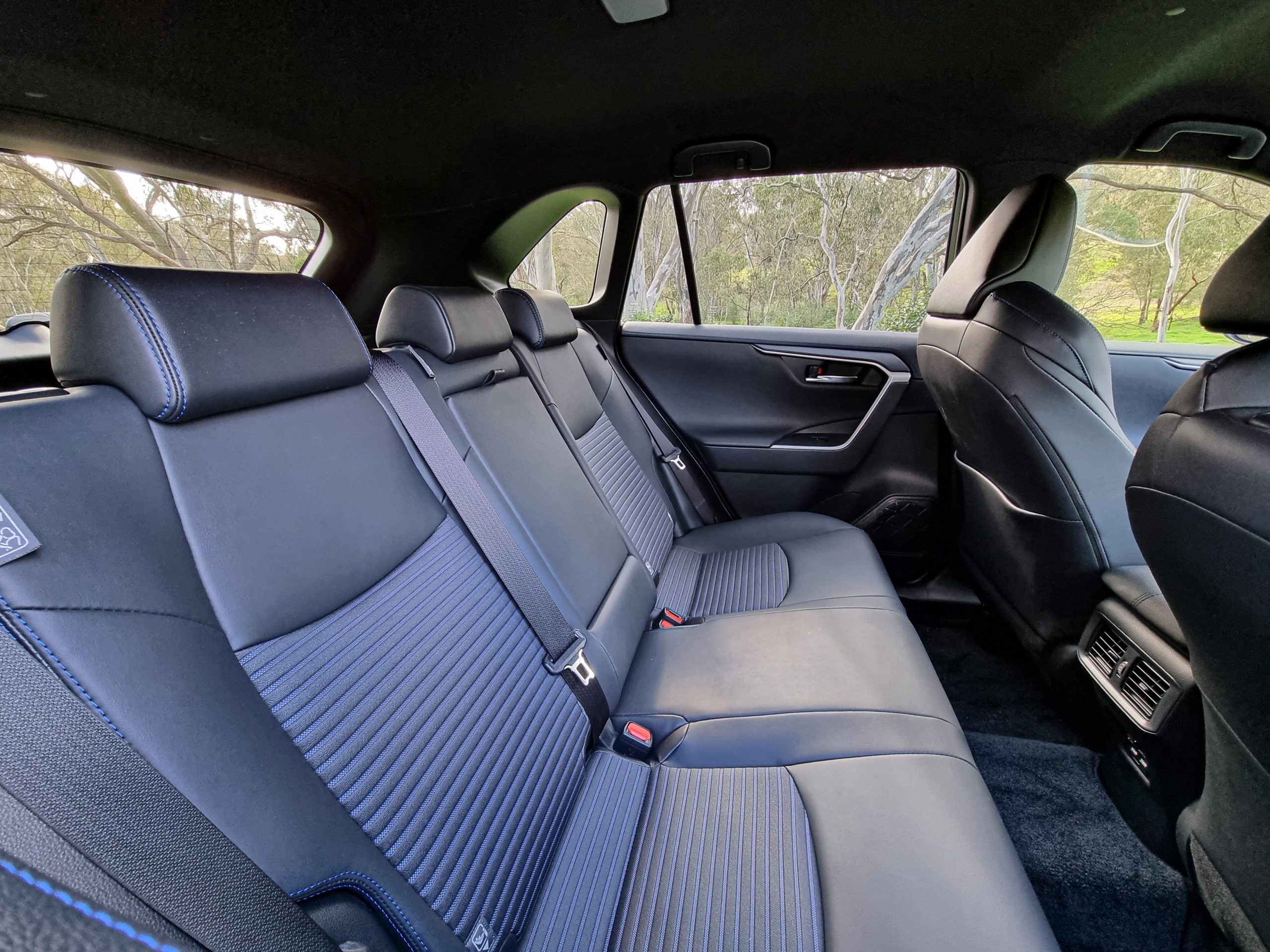
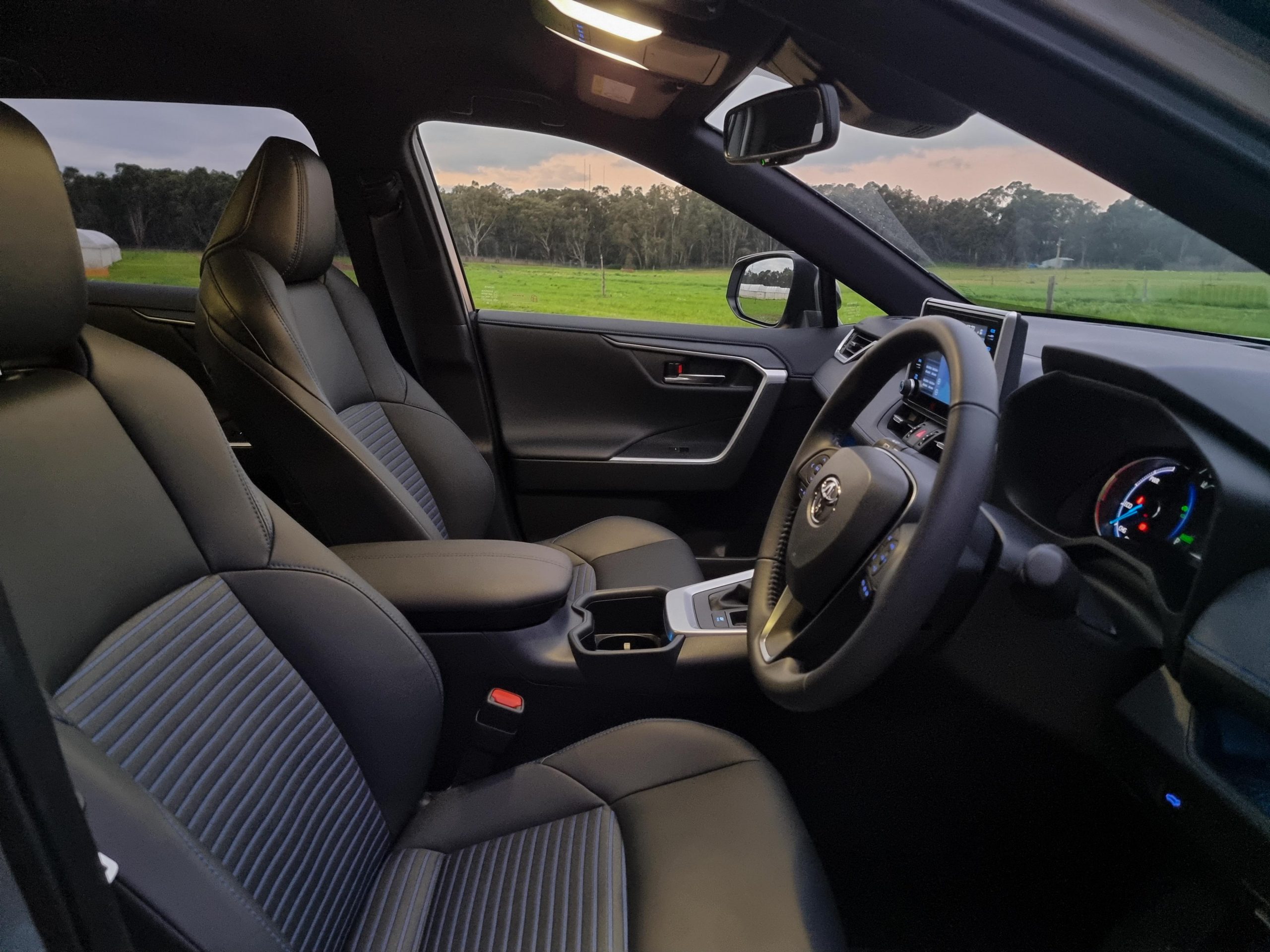
Back seat passengers are well looked after too with a great amount of leg, head and foot room. The rear setbacks even offer a reclined position which would work wonderfully on longer trips. There are air vents, two USB-A ports and a centre armrest too, though no heated seats.
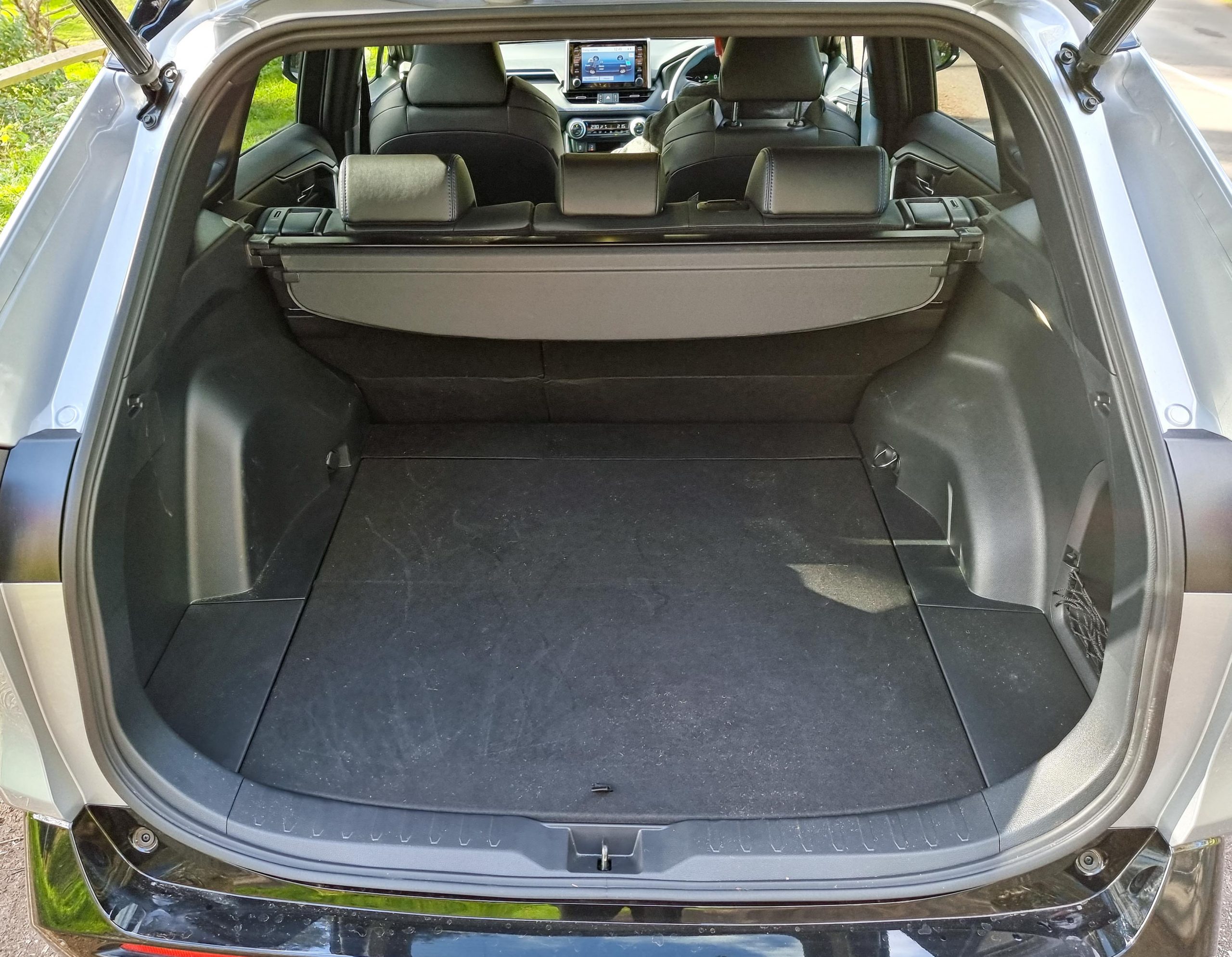
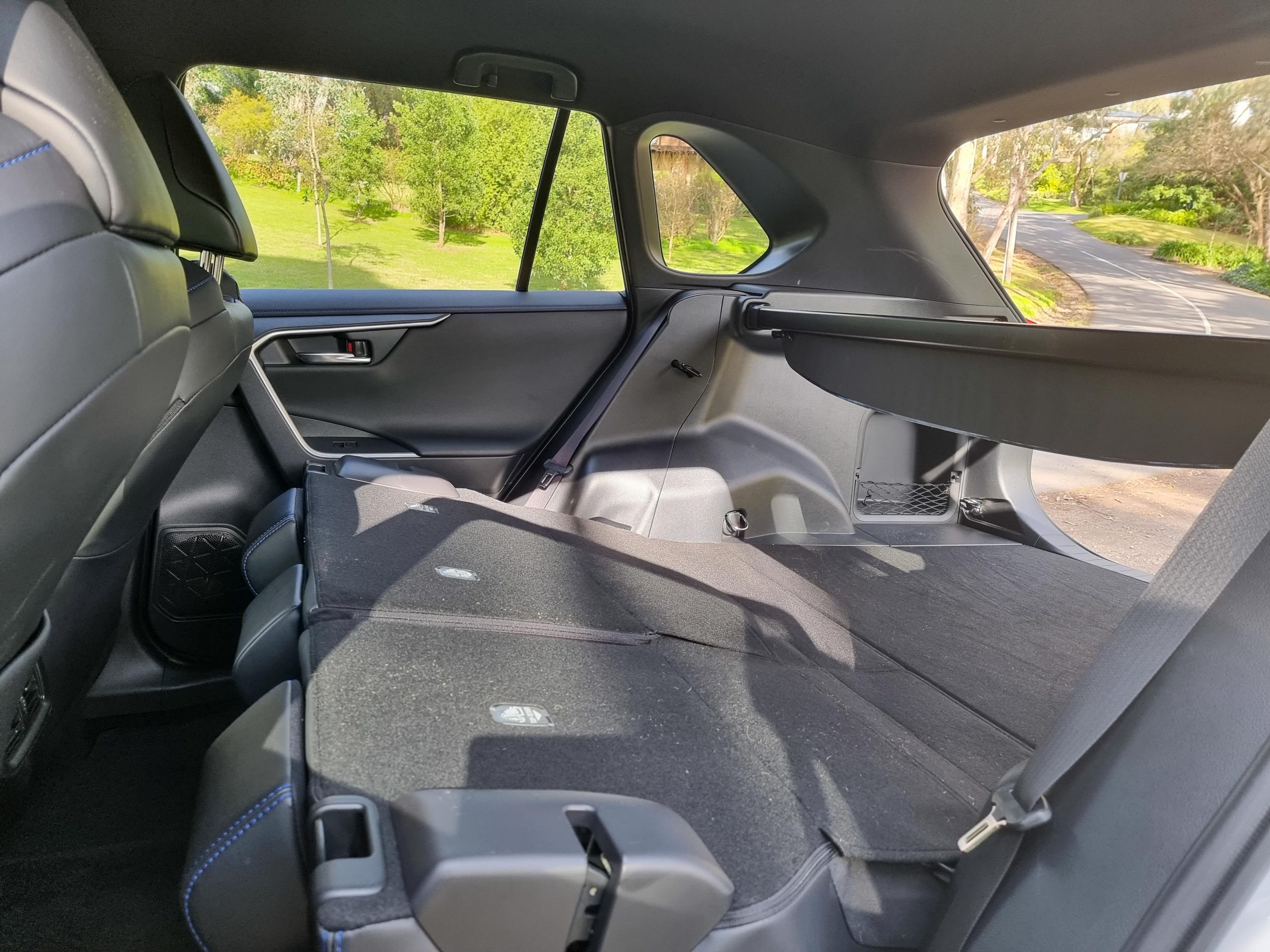
The RAV4’s boot is mighty, with a sizeable 542L when the dual lever boot floor set to its highest position, or 1,690L when lowered. To help with loading, it has a small lip and when the seats are folded, there is no hump in the floor when loading longer items. Oddly, the electric tailgate takes forever to open and beeps annoying for what seems an eternity before the boot either reaches its fully open or closed position.
Service & Warranty: 9/10
As we’ve come to expect from modern Toyota products, the 2022 Toyota RAV4 XSE Hybrid is in its own league in terms of running costs. It requires servicing yearly or every 15,000kms, whichever comes first. Each of the first five services cost a mere $230, which adds up to a total of $1,150 over the first five years/75,000km of ownership, undercutting key rivals and most other cars on the market.
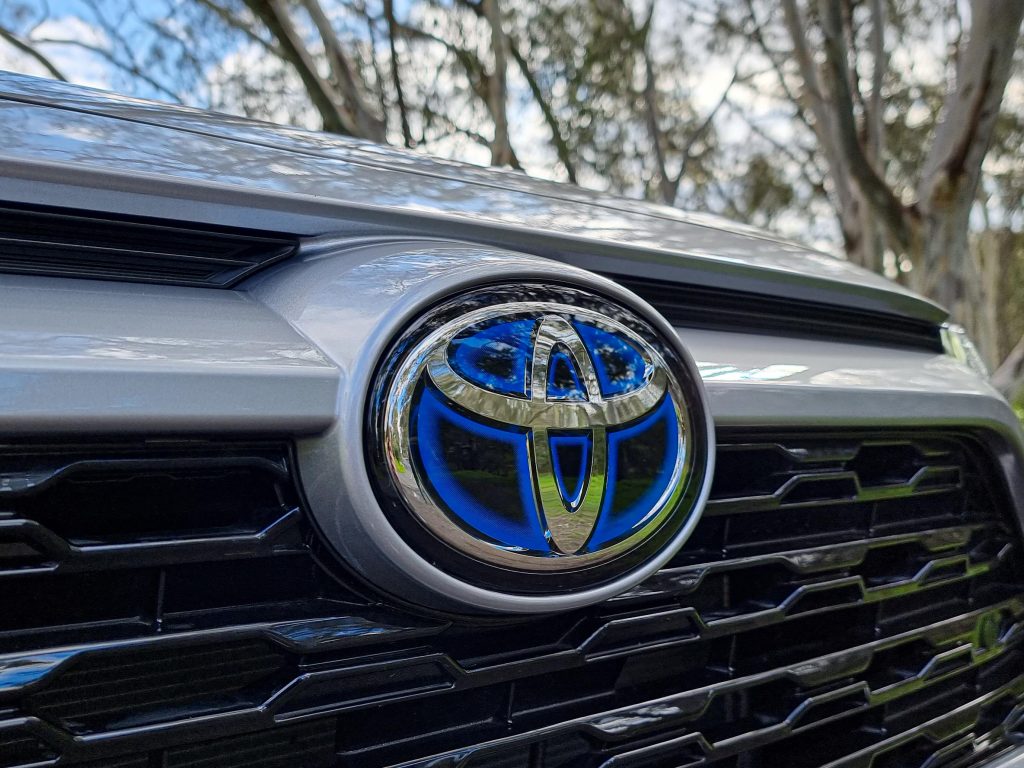
As always, Toyota’s five-year/unlimited km warranty applies to all RAV4s, but Toyota will extend this to seven years for the drivetrain if serviced at Toyota. There is also a 10-year warranty for the battery – though no roadside assistance at all, unfortunately. By comparison, the Tucson costs $1,595 to service over the first five years/75,000km, matching the RAV4’s 15,000kms service intervals but most other rivals have shorter service intervals than the RAV4. The CX-5 costs $1,810 over five years/50,000kms to service and the Kia Sportage costs $2,465 over the five years/50,000kms.
The 2022 Toyota RAV4 XSE Hybrid DiscoverAuto Rating: 8.6/10
So the question remains – should you sign up for a new RAV4 and wait 12 months? Well if you don’t need a new car right away, then yes. The RAV4 is a class act at a time when fuel prices are at an all-time high. But don’t think that fuel economy is the only trick the RAV4 has up its sleeve. The is a truly capable SUV with few weaknesses, being comfortable, spacious and even a little fun on twisty roads.
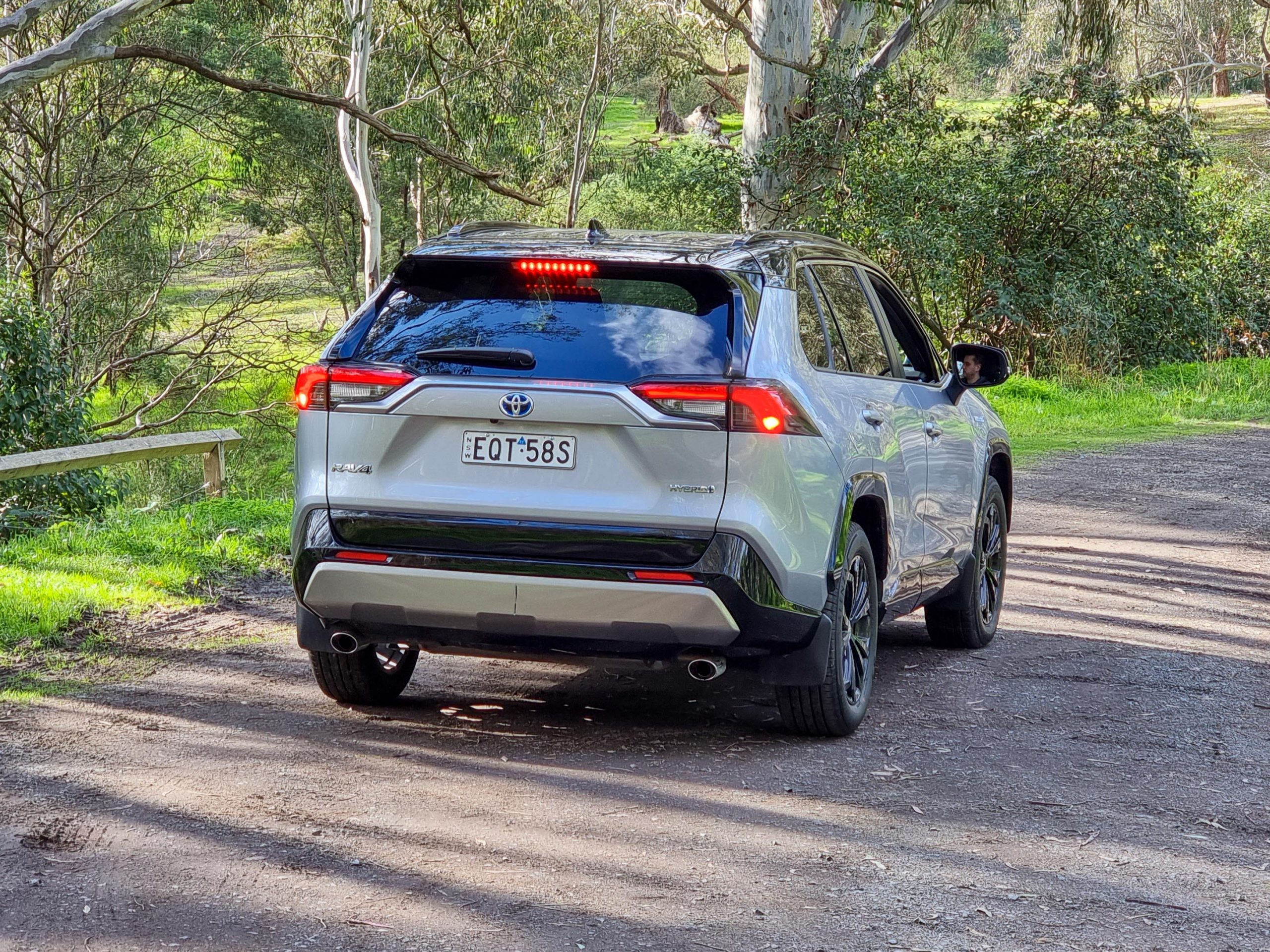
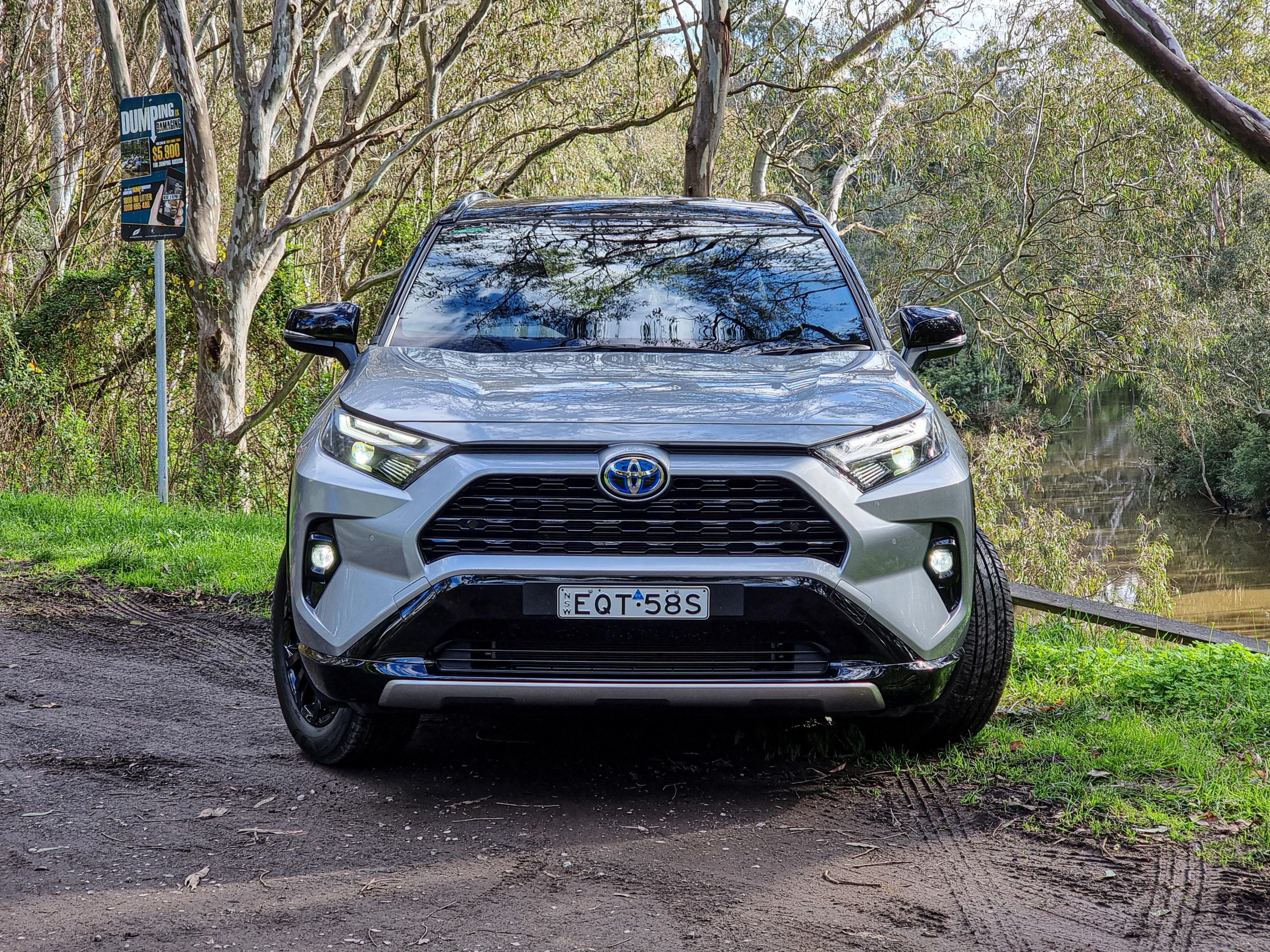
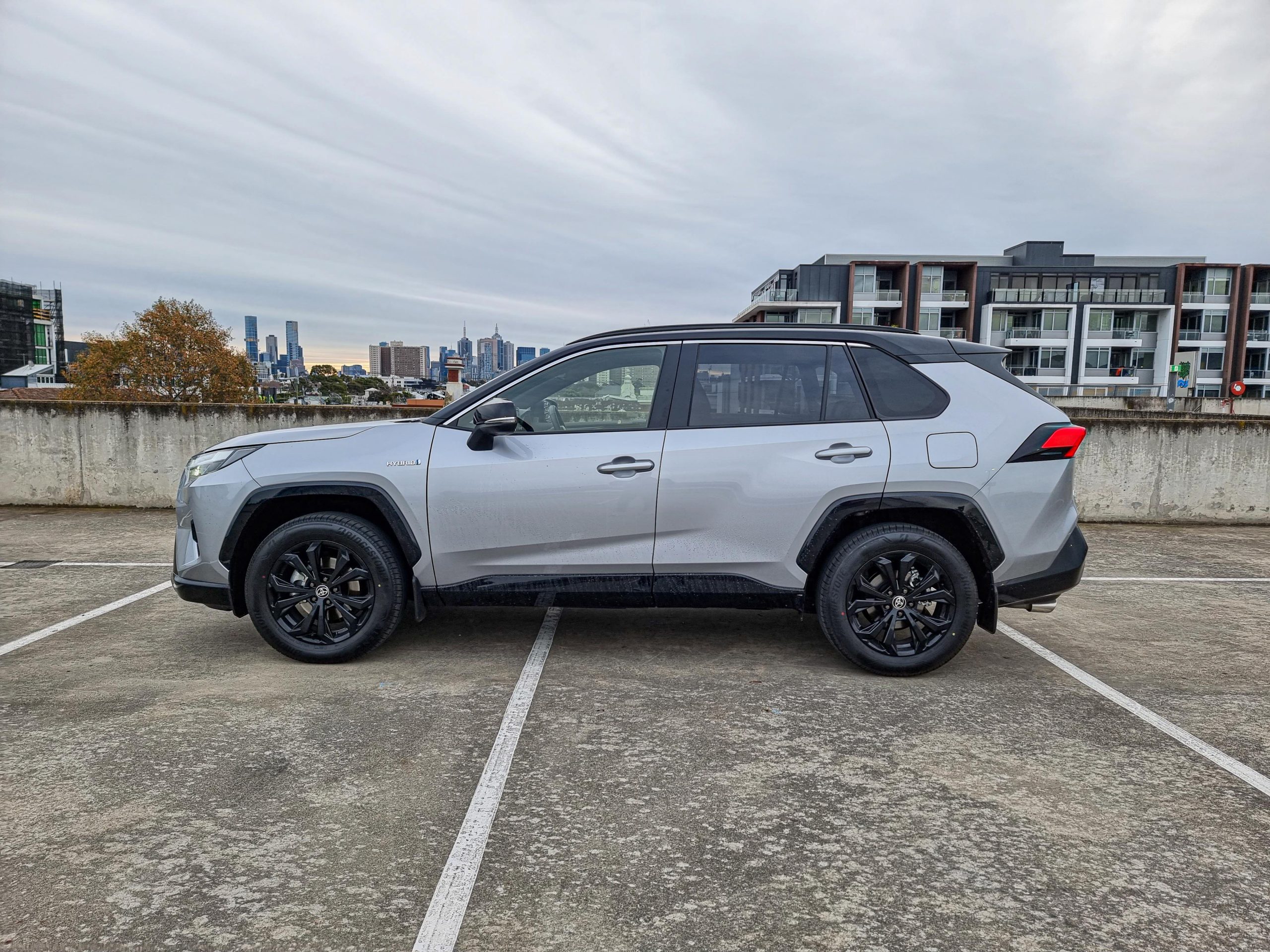
The new XSE variant is also the pick of the RAV4 range offering an impressive level of standard equipment without some of the things most families won’t need such as a panoramic sunroof and improved sound system. It hits the spot perfectly and proves just how relevant the RAV4 is in the times we live in. And there we have it, the very reason behind the RAV4’s 12 month wait times.
So which family SUV should you buy? If you can hold off on the delivery of your new car, grab a RAV4 Hybrid. If you can’t, head towards other excellent rivals such as Kia Sportage, Hyundai Tucson and updated CX-5. Either way, you won’t be disappointed.
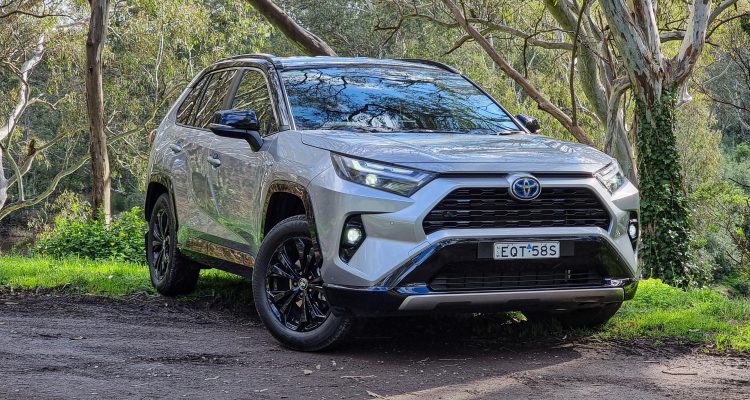
Leave a Reply